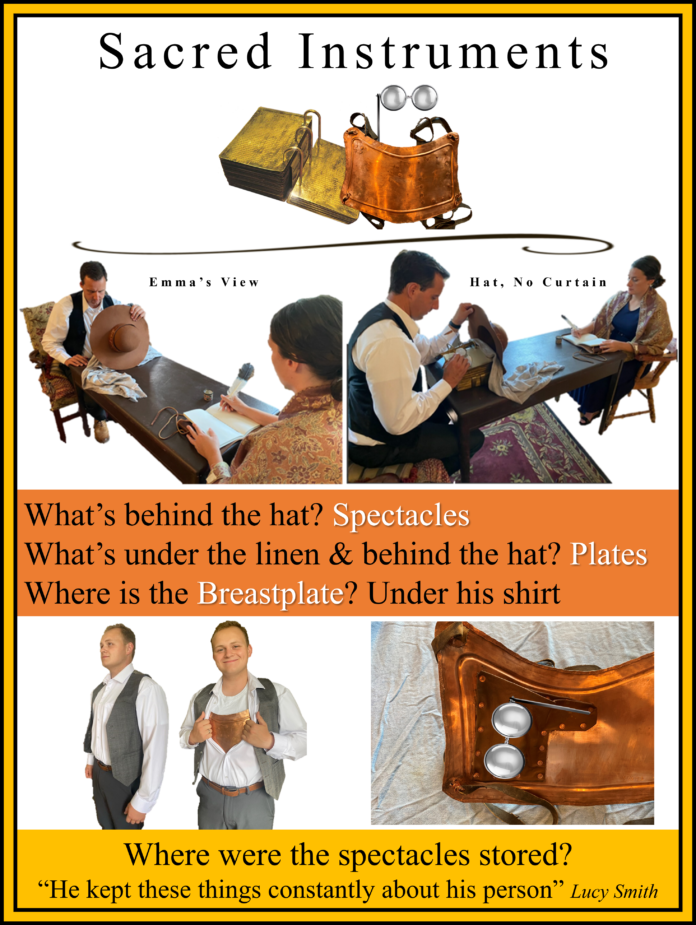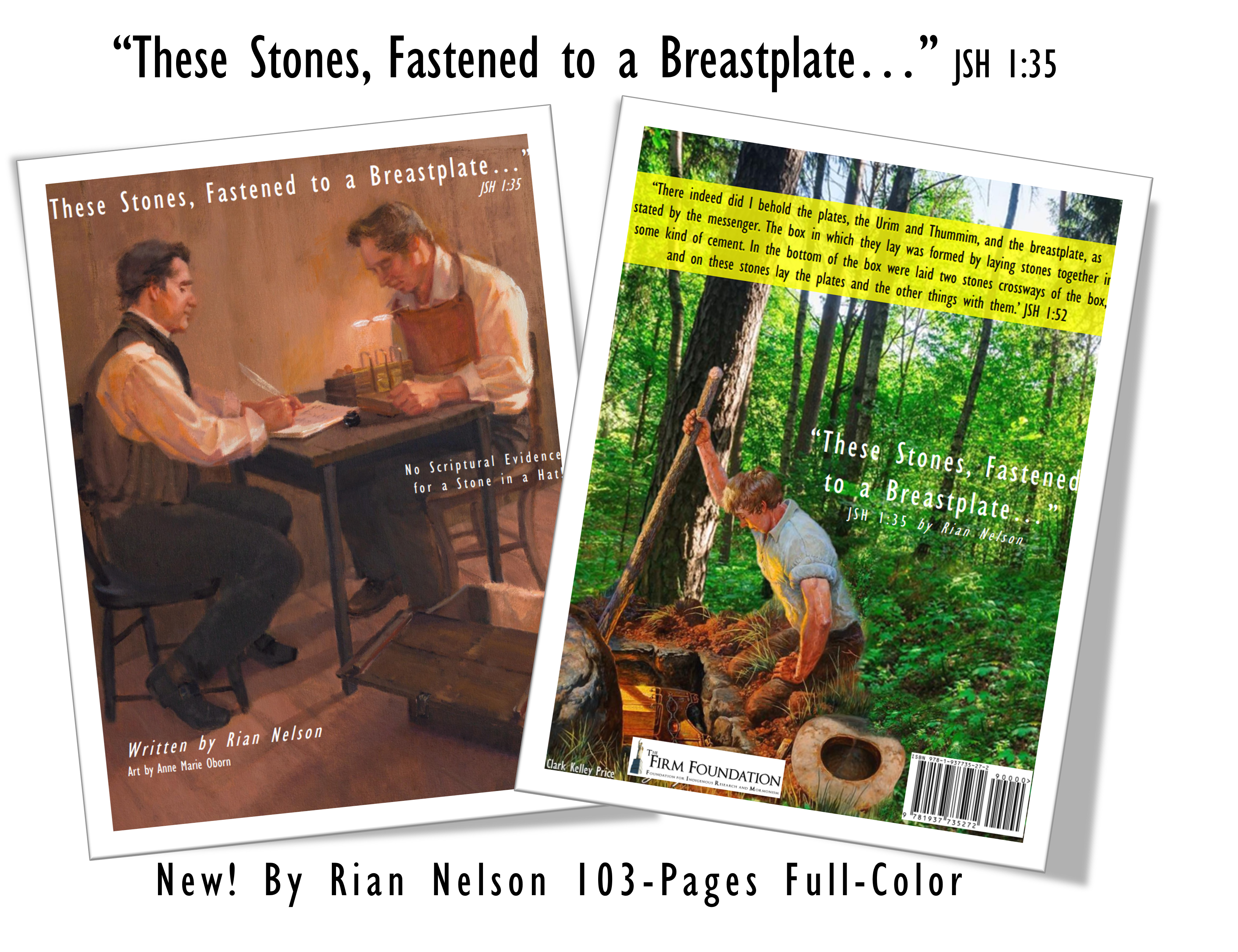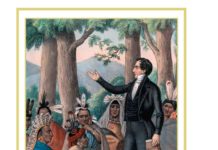Members of The Church of Jesus Christ of Latter-day Saints have received a spiritual witness that the Book of Mormon is the word of God and it is a second witness with the Bible as a Testament of Jesus Christ.
There is a difference of opinion with some members of the Church about the method of translation of the Book of Mormon by the Prophet Joseph Smith, but all active members of the Church believe the Book of Mormon was translated by the “Gift and Power of God.”
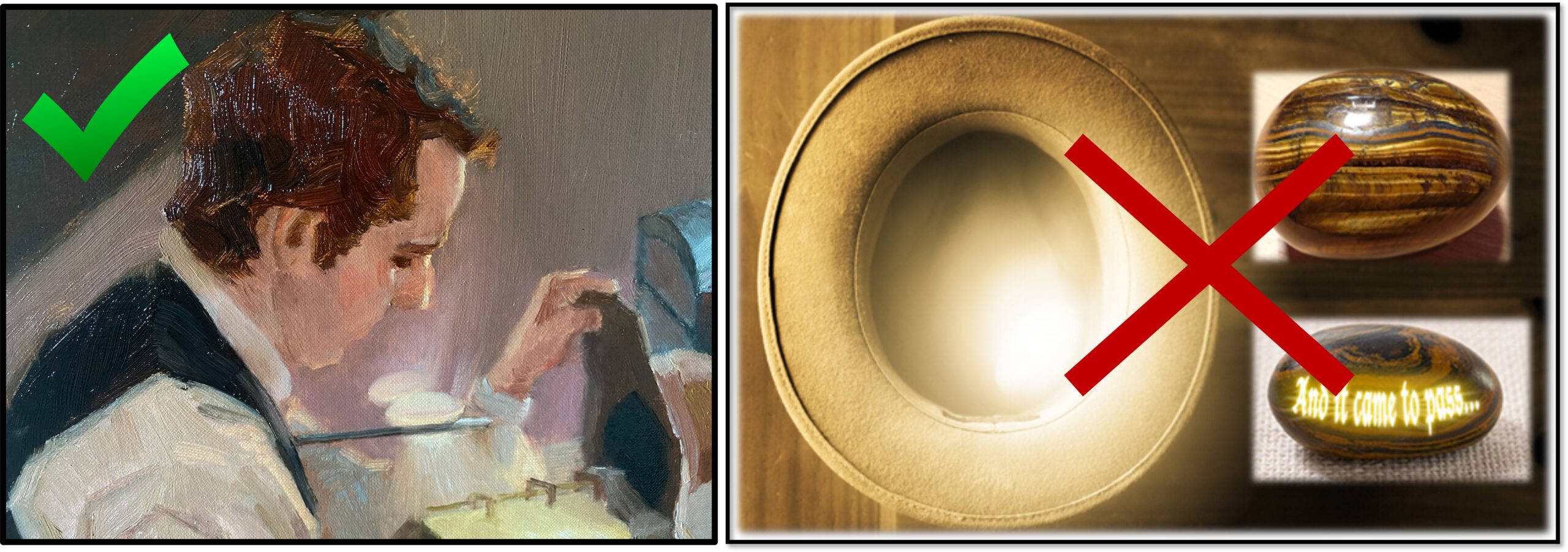
The Church and its Prophet and Apostles have not determined what the specific method of translation was, as just knowing the doctrine of the Church that the Book of Mormon is the word of God is most important, which I am in total agreement with. The Church is very supportive of anyone to have their own opinion about what instrument or method that Joseph Smith used. That is the beauty of the Gospel of Jesus Christ. We are blessed with knowing the Doctrine’s of the Lord’s Church through Prophets and Apostles, but on our personal opinions we have our freedom to choose.
Peep Stone
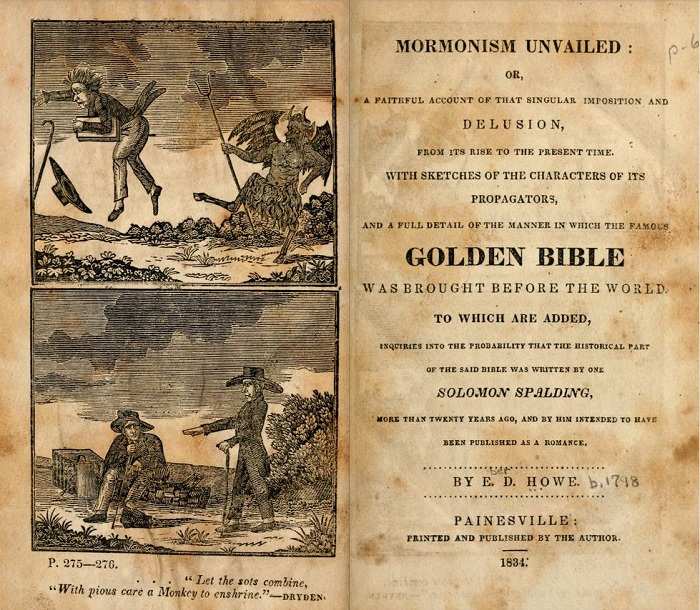 I believe the old stories about Joseph being tied to the occult came from the 1834 anti-Mormon book “Mormonism Unvailed” by E.D. Howe. Most of this was due to the book talking about the rock in the hat and some sort of evil Joseph must have been doing. I grew up in the sixties and my mother told me the peep stone in a hat was evil and I believed her. The majority of the Church agreed, but the church didn’t discuss the way the Urim and Thummim looked nor did they speak much about the Interpreters. We all just said, Joseph translated by the gift and power of God. [FYI In the Book of Mormon the term Urim and Thummim is never used. Instead they are always called “Interpreters”] But now in todays world, many people are trying to make Joseph and his method of peep stones evil, or strange again. That is why I share evidence in the scriptures to verify that Joseph only used as the scriptures say, “these two stones fastened to a breastplate” JSH 1:35, or he used the Interpreters, or he used the Urim and Thummim to translate, all three meaning the same thing.
I believe the old stories about Joseph being tied to the occult came from the 1834 anti-Mormon book “Mormonism Unvailed” by E.D. Howe. Most of this was due to the book talking about the rock in the hat and some sort of evil Joseph must have been doing. I grew up in the sixties and my mother told me the peep stone in a hat was evil and I believed her. The majority of the Church agreed, but the church didn’t discuss the way the Urim and Thummim looked nor did they speak much about the Interpreters. We all just said, Joseph translated by the gift and power of God. [FYI In the Book of Mormon the term Urim and Thummim is never used. Instead they are always called “Interpreters”] But now in todays world, many people are trying to make Joseph and his method of peep stones evil, or strange again. That is why I share evidence in the scriptures to verify that Joseph only used as the scriptures say, “these two stones fastened to a breastplate” JSH 1:35, or he used the Interpreters, or he used the Urim and Thummim to translate, all three meaning the same thing.
Names of the same Instrument used to Translate the Book of Mormon
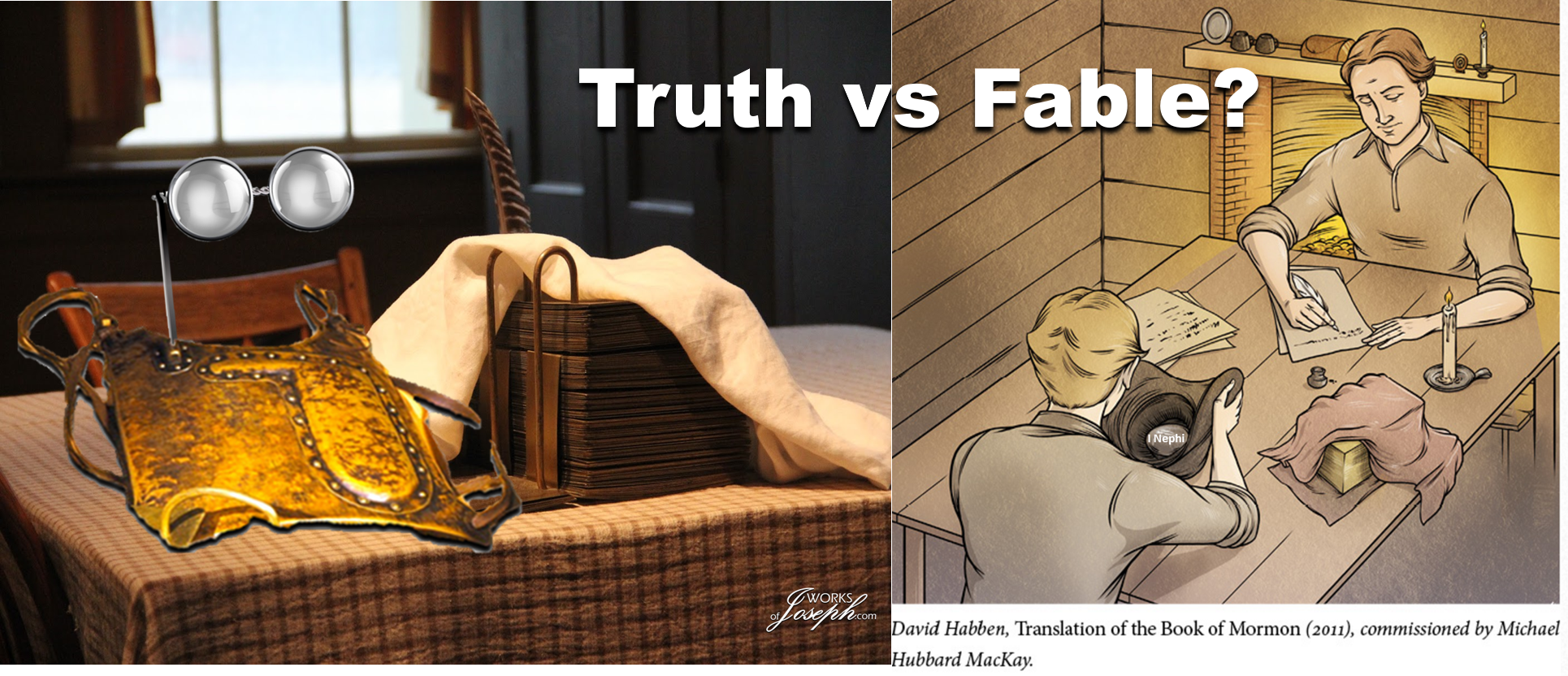
There are many names for the instrument used by Joseph Smith to translate the gold plates with. There seem to be only three people (Joseph, Oliver, and Lucy Smith who held and described the instruments under a linen) who actually saw all three instruments that were in the Hill Cumorah. There is much speculation on what to call those items. Joseph and Oliver of course are the first hand witnesses. In the Book of Mormon there is only one name for the instrument, and that is “INTERPRETERS.” No other word is found in the Book of Mormon which is speaking about the instrument of “two stones fastened to a breastplate.”
Various names of the proper instruments used, usually using a plural.
1- Interpreters (Word found in the Book of Mormon, and PGP)
2- Directors (Alma 37:21, 24. In 1920 “Interpreters” was changed to “Directors” in the Book of Mormon)
3- Urim and Thummim (Word found in the D&C, PGP, and the Old Testament, 4 times in The Testimony of the Prophet Joseph Smith in the preface of the BofM) Urim and Thummim in the Old Testament is a different one than the one found in the Book of Mormon.
4- The Key (Lucy Mack Smith)
5- These stones, fastened to a breastplate
6- Two stones which were fastened into the two rims of a bow (Words found similar in many places)
7- Spectacles (JSP Letterbook 1/11)
8- Glasses (Luck Mack Smith,
9- 2 smooth 3 cornered diamonds set in glass and the glass was set in silver bows. (Lucy Mack Smith)
10- Two transparent stones, resembling glass, set in silver bows (Oliver Cowdery)

These words are never found in association with the translation in scripture:
1- Peep Stone
2- Seer Stone
3- Seer Stones
4- Seer’s Stone
5- Stone in the hat
6- Stone
7- Single Stone
8- Gazelem (Stone, mentioned in Alma 37:23 but does not refer to translation)*
*Blog about the scripture, “Gazelem, a stone”, which really means,
“Joseph Smith, a Seer”
Many Physical Instruments
“Some people have balked at this claim of physical instruments used in the divine translation process, but such aids to facilitate the communication of God’s power and inspiration are consistent with accounts in scripture. In addition to the Urim and Thummim, the Bible mentions other physical instruments used to access God’s power: the rod of Aaron, a brass serpent, holy anointing oils, the Ark of the Covenant, and even dirt from the ground mixed with saliva to heal the eyes of a blind man.” Gospel Topic Essays, Book of Mormon Translation
150 Years Ago in the Church
Here is some information from Jonathan Neville that you will enjoy, as I believe it to be a very accurate explanation of attitudes early in the Church and today.
“For over 150 years, LDS Church leaders taught that Joseph Smith translated the Nephite plates with the Urim and Thummim. From the early 1830s, critics said that Joseph produced the Book of Mormon by either (i) reading words off a seer stone he put in a hat or (ii) reading a manuscript written by Solomon Spalding and edited by Sidney Rigdon. All three alternatives were set out in the 1834 book Mormonism Unvailed. When that book was released in October 1834, Oliver Cowdery responded by declaring unambiguously that Joseph translated the record with the Urim and Thummim. You can see Oliver’s declaration in the Pearl of Great Price, at the end of Joseph Smith-History, JSH 175n or in the Joseph Smith papers here: https://www.josephsmithpapers.org/paper-summary/history-1834-1836/50
You might think that Oliver’s declaration, which Joseph Smith helped write and specifically endorsed multiple times, would end the debate. But no. A few decades ago, some LDS historians decided it was time to deal with “all the evidence.” They started what has been called the “New Mormon History” to bring out some of the evidence that differed from, and contradicted, the traditional Church history narratives. Among these was SITH. [Stone in the Hat] Historians largely rejected the Spalding theory, so they focused on SITH vs U&T. [Urim and Thummim]. (Sending the Spalding theory into oblivion is one reason why everyone has overlooked the key role it played, as I’ve discussed before.) Rough Stone Rolling was a key part of the New Mormon History’s focus on SITH, but lots of people contributed. The historians in the Church History department largely embraced the New Mormon History as well as M2C [Mesoamerican 2-Cumorah Theory], and the result is the presentation of SITH in the Ensign (which I discussed here), the lesson manuals, the videos, etc. Several justifications have been proposed. Some have claimed that when Joseph and Oliver said or wrote “Urim and Thummim” they really meant the peep stone Joseph found in a well. That obviously contradicts both what they said and the historical record. Others claim Joseph used both, but that also contradicts both what Joseph and Oliver always said. Some say the “SITH sayers” were all liars who hated Joseph Smith, but that also contradicts the historical record. Besides, people on the other side just say Joseph and Oliver were liars. Stalemate.  In a recent presentation, I summarized it this way, leading to my own conclusions. As I mentioned at the outset, a longer version of this is available here:” Jonathan Neville https://www.bookofmormoncentralamerica.com/p/video-summary-of-sith-and-new-mormon.html
In a recent presentation, I summarized it this way, leading to my own conclusions. As I mentioned at the outset, a longer version of this is available here:” Jonathan Neville https://www.bookofmormoncentralamerica.com/p/video-summary-of-sith-and-new-mormon.html
The Book of Mormon Is Tangible Evidence of the Restoration
Speaking about the method of Translation President Russell M. Nelson said, “Quite miraculous really, we have through the gift and power of God, we have a lot of suggestions about how it was done…” President Nelson also in this video demonstrated with a hat in his hands and spoke about the possible use of, as he said, “Urim and Thummim Seer Stones” as he is quoted as saying in the video titled. “The Book of Mormon Is Tangible Evidence of the Restoration.
The method of Translation is not a question about doctrine but about belief or opinion.

The Brethren don’t often concern themselves with non-essential information. Doctrine and special witness of the Savior is most important to them, and it should be. Our wonderful Prophet and Apostles depend on historians and other quorums to research and answer historical questions, as they trust them as I do, to share accurate information.
No one except Joseph, Oliver and Lucy Mack Smith have ever seen the breastplate or the spectacles, so researchers could only share what their interpretation is of the information they have found. Many historians rarely look outside the box and there is always a hat or a rock nearby, so that makes it easy to demonstrate. Many historians also like to come up with new theories. Our Prophet is just re-sharing many things the historians have shared with him. That’s why the Brethren rarely say exactly how the translation happened as it is not revelation, so it really doesn’t concern them. I suppose it shouldn’t matter to most of us, as the spiritual confirmation that Joseph used the gift and power of God is the best answer. However, I enjoy searching for additional answers as Moroni said, “ye may know the truth of all things.”
The stone in the hat is not a fact but many historians and Church videos show it as the “New Narrative.” Nowhere in the scriptures does it even speak about it. Church Historians have developed consensus in their progressive thoughts, and they don’t like the traditionalist view. It’s just like the opinion that there is consensus that man causes global warming, so the intellectuals all agree on their non provable THEORY.
The stone in a hat is a theory. Our scriptures tell us many times Joseph used “these two stones fastened to a breastplate” JSH 1:35. And Oliver Cowdery in scripture said, “Day after day I continued, uninterrupted, to write from his mouth, as he translated with the Urim and Thummim, or, as the Nephites would have said, ‘Interpreters,’ the history or record called ‘The Book of Mormon.” JSH 1:75n. Latter-day Saints who testify the Scriptures are true, should be able to agree that Joseph used those items which were in the stone box at the Hill Cumorah. Plates, Breastplate, and Interpreters.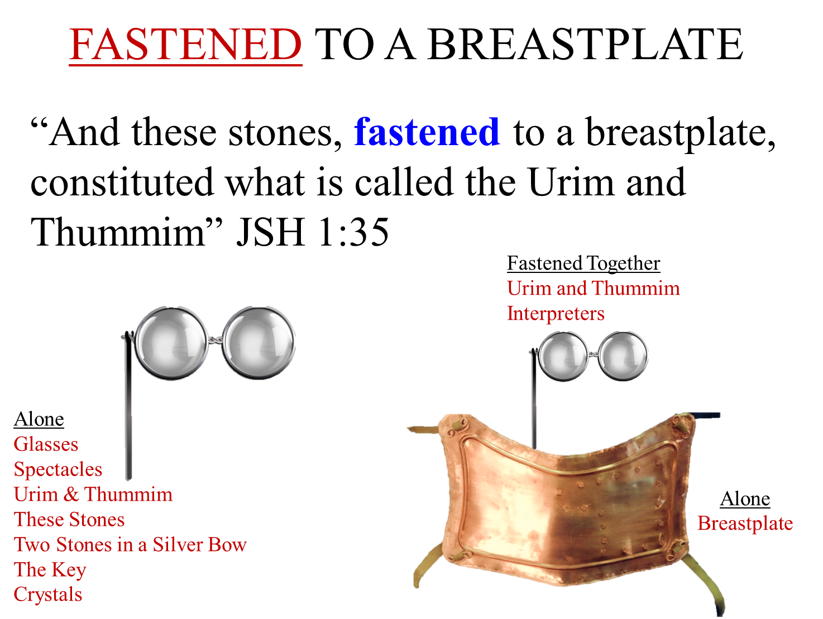
The details of this miraculous method of translation are still not fully known
Elder Russell M. Nelson said this. “As Oliver Cowdery testified a few years later: “These were days never to be forgotten—to sit under the sound of a voice dictated by the inspiration of heaven, awakened the utmost gratitude of this bosom! Day after day I continued, uninterrupted, to write from his mouth, as he translated *… the history or record called ‘The Book of Mormon.’ (JS—H 1:75n. The details of this miraculous method of translation are still not fully known. Yet we do have a few precious insights. David Whitmer wrote:
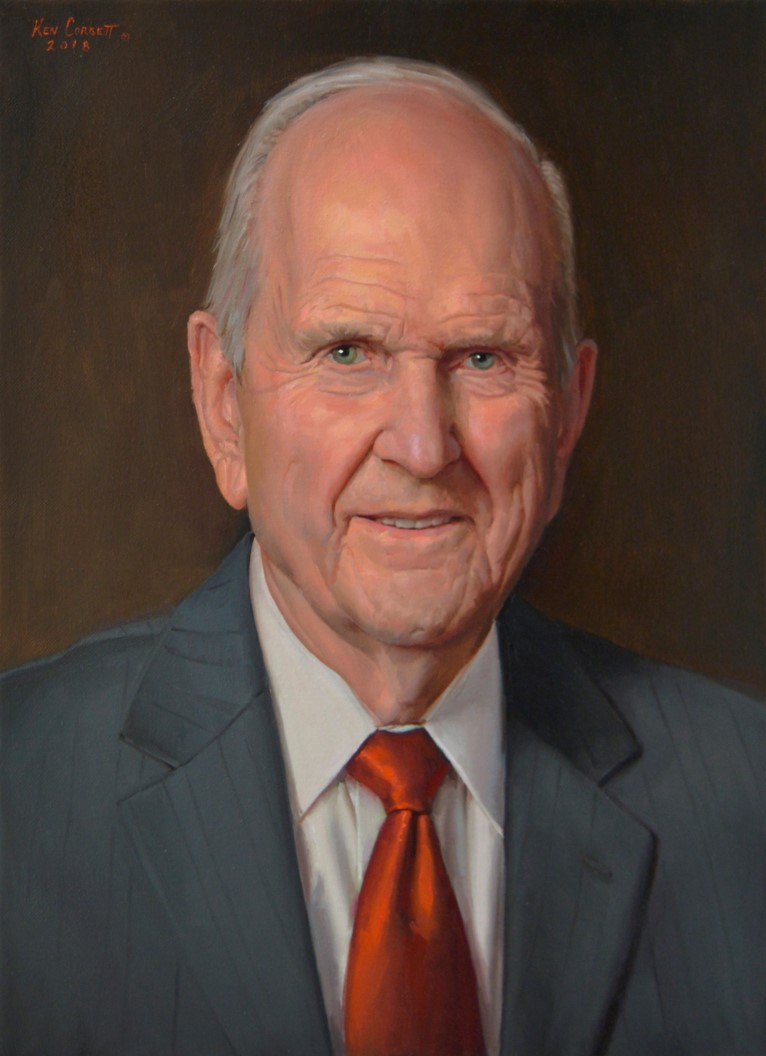
“Joseph Smith would put the seer stone into a hat, and put his face in the hat, drawing it closely around his face to exclude the light; and in the darkness the spiritual light would shine. A piece of something resembling parchment would appear, and on that appeared the writing. One character at a time would appear, and under it was the interpretation in English. Brother Joseph would read off the English to Oliver Cowdery, who was his principal scribe, and when it was written down and repeated to Brother Joseph to see if it was correct, then it would disappear, and another character with the interpretation would appear. Thus the Book of Mormon was translated by the gift and power of God, and not by any power of man.” (David Whitmer, An Address to All Believers in Christ, Richmond, Mo.: n.p., 1887, p. 12.)…” A Treasured Testament 1993 By Elder Russell M. Nelson Of the Quorum of the Twelve Apostles (* and color added)
In this talk by Elder Nelson he chose to use a quote from David Whitmer, which is fine with me. I don’t know more than our Apostles and I sure will never tell them what to ever say. I love and respect them. My comment is, if you read many other scriptures you can also know as Elder Nelson says, “The details of this miraculous method of translation are still not fully known.” I have chosen to use Elder Nelson’s talk and some scriptures to personally research, and I have decided not to depend on David Whitmer’s second had quote. I decided to use first hand quotes of Joseph and Oliver. What you do is of course up to you.
Edited Quote?
My commentary on Elder Nelson’s quote above, is also that the scripture quoted in JSH 1:75n above, adds more value when the last part of that scripture is not omitted by the ellipsis in pink above. Elder Nelson may have purposely left off a portion of that scripture with no intention whatsoever which is fine. I love our Prophet. My purpose is simply to find personal revelation to help me understand the method of translation, so I will use Elder Nelson’s and many other leaders, to help me come to a solid confirmation for myself. I am making the point that certain trusted historians, intellectuals, and editors may, at times, undermine the work of the Lord—intentionally or unintentionally—by their possible omission of certain words with an ellipse or by editing of certain quotes for the Brethren. I am not saying that happened here as I have no idea, but it could happen or does happen with some editors.
Here is the completed scripture that was not included in place of the *Pink ellipse above. “with the Urim and Thummim, or, as the Nephites would have said, ‘Interpreters.” This is a huge statement from scripture that helps me tremendously in understanding the entire context of what Joseph Smith was saying. The last sentence of the quote would say, “Day after day I continued, uninterrupted, to write from his mouth, as he translated with the Urim and Thummim, or, as the Nephites would have said, ‘Interpreters.” JSH 1:75n. That complete sentence gives me clarity that Joseph did not use a stone in a hat.

As I am personally researching translation methods I feel I am losing important meaning by repeating the scripture JSH 1:75 without the entire quote. As my thorough research continued, I found this ellipsis was included in at least 4 or 5 different talks by General Authorities including one in 2020. No Judgement on my part whatsoever, just an emphasis on detailed meaning about the entire scripture which helped me come to my opinion, that a stone in a hat was not used. (Talk references available on request).
This entire scripture to me, in JSH 1:75n is a confirmation to me personally that Joseph used the Urim and Thummim or the Interpreters, not a stone in a hat. Along with the two scriptures in JSH 1:35, and 42, it is clear to me the proper instrument used was “two stones in silver bows… fastened to a breastplate” like the picture below.

Personal Revelation
As you can see Elder Nelson above did say, “The details of this miraculous method of translation are still not fully known.” That means many, including some of the Apostles are not sure the exact method and neither am I. If they did, it would be part of our Doctrine. If we as members want to know additional information about non-doctrinal issues, I believe it is up to each of us individually to gain our own personal revelation about the translation process and many other things that may be important to us. For example I believe the Book of Mormon events happened in North America, based on my own study, research and personal revelation. The Church is neutral on that issue which is fine with me.
In another example of personal study, even though the Church has no official position on evolution, I have a personal opinion. I do not believe a cat can ever become a dog and that evolution can only come from within a species. “This is the most recent quote I can find about the evolution opinion by the Church. “The Church has no official position on the theory of evolution. Organic evolution, or changes to species’ inherited traits over time, is a matter for scientific study. Nothing has been revealed concerning evolution. Though the details of what happened on earth before Adam and Eve, including how their bodies were created, have not been revealed, our teachings regarding man’s origin are clear and come from revelation.” New Era 2016 https://www.churchofjesuschrist.org/study/new-era/2016/10/to-the-point/what-does-the-church-believe-about-evolution.html?lang=eng
However in 1987 Elder Nelson gave a great talk about evolution saying, “Through the ages, some without scriptural understanding have tried to explain our existence by pretentious words such as ex nihilo (out of nothing). Others have deduced that, because of certain similarities between different forms of life, there has been a natural selection of the species, or organic evolution from one form to another. Still others have concluded that man came as a consequence of a “big bang” that resulted in the creation of our planet and life upon it. To me, such theories are unbelievable!” “We are children of God, created by him and formed in his image. Recently I studied the scriptures simply to find how many times they testify of the divine creation of man. Looking up references that referred either to create or form (or their derivatives) with either man, men, male, or female in the same verse, I found that there are at least fifty-five verses of scripture that attest to our divine creation. So, we can either believe in evolution or the scriptures, not both.” The Magnificence of Man RUSSELL M. NELSON of the Quorum of the Twelve Apostles March 29, 1987.
“By the Whisperings of the Spirit of God”
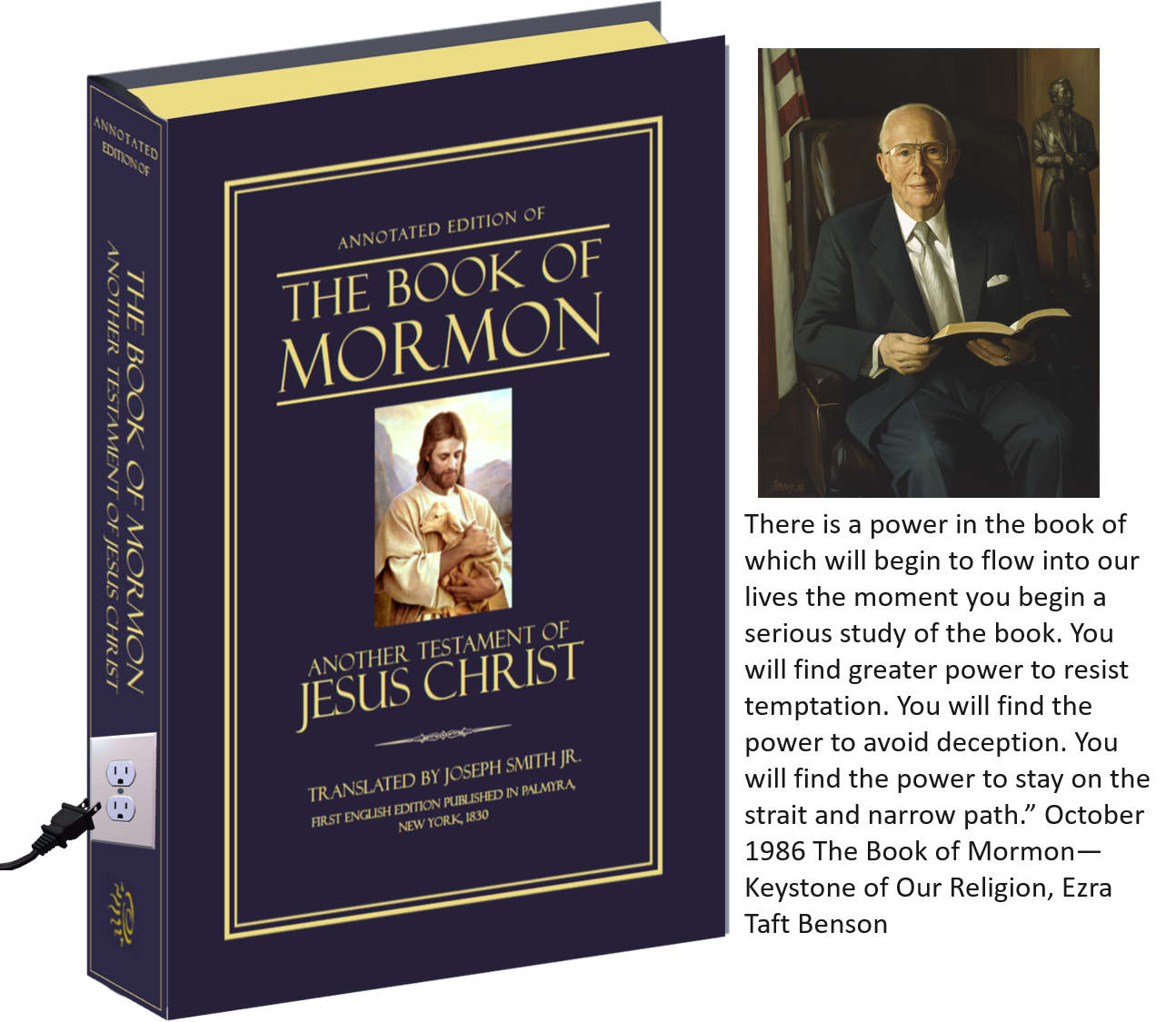
Elder Nelson quotes David Whitmer, Emma Smith, and Edmund Briggs in his A Treasured Testament article, which may be accurate quotes, but these individuals are all second and third hand witnesses. None of them ever saw Joseph translate the plates nor did they see the breastplate or the spectacles. I however feel the many Scriptures quoted [PDF File Available Below], along with the words of Joseph Smith and of Oliver Cowdery who were first hand accounts, ring most true to my heart as I have followed the council of Elder Benson who said, “Suppose a leader of the Church were to tell you that you were supporting the wrong side of a particular issue. Some might immediately resist this leader and his counsel or ignore it, but I would suggest that you first apply the fourth great civic standard for the faithful Saints. That standard is to live for, to get, and then to follow the promptings of the Holy Spirit.”
Said Brigham Young: “I am more afraid that this people have so much confidence in their leaders that they will not inquire for themselves of God whether they are led by Him. … Let every man and woman know, by the whisperings of the Spirit of God to themselves, whether their leaders are walking in the path the Lord dictates, or not.” (JD, vol. 9, p. 150.)” Ezra Taft Benson April 1972 Conference, Civic Standards for the Faithful Saints.
Professors Opinions I Agree With
Two BYU Professors as I quote below, Craig Ostler and Joseph Fielding McConkie have the opinion that as I have researched I agree with, as I quote them from their article titled The Process of Translating the Book of Mormon. (Available online here and below). Elder Ostler and McConkie say, “As to David Whitmer’s explanation, it should be remembered that he never looked into the Urim and Thummim nor translated anything. His testimony of how the Book of Mormon was translated is hearsay. Spanning a period of twenty years (1869-1888), some seventy recorded testimonies about the coming forth of the Book of Mormon claim David Whitmer as their source. Though there are a number of inconsistencies in these accounts, David Whitmer was repeatedly reported to have said that after the loss of the 116 pages, the Lord took both the plates and the Urim and Thummim from the Prophet, [*]never to be returned. In their stead, David Whitmer maintained, the Prophet used an oval-shaped, chocolate-colored seer stone slightly larger than an egg.
Thus, everything we have in the Book of Mormon, according to Mr. Whitmer, was translated by placing the chocolate-colored stone [Similar to the picture on the left] in a hat into which Joseph would bury his head so as to close out the light. While doing so he could see “an oblong piece of parchment, on which the hieroglyphics would appear,” and below the ancient writing, the translation would be given in English. Joseph would then read this to Oliver Cowdery, who in turn would write it. If he did so correctly, the characters and the interpretation would disappear and be replaced by other characters with their interpretation (Cook, David Whitmer Interviews, 115, 157-58)… Continued below.
*Editors note: It is clear that the Urim and Thummim and the plates were returned to Joseph Smith shortly after the decision to allow Martin to take the 116 pages, Joseph was reprimanded but the translation continued as before. In Church History it says, “Joseph affirmed that he “translated from the plates,” and that he used the Urim and Thummim to do so. After the loss of the 116 pages by Martin Harris, both the plates and the Urim and Thummim were taken from him. Without the Urim and Thummim he could not translate. During this period Joseph made a short visit to his parents in Manchester, New York, and then returned again to Pennsylvania. “Immediately after my return home,” he recounted, “I was walking out a little distance, when, behold, the former heavenly messenger appeared and handed to me the Urim and Thummim again for it had been taken from me in consequence of my having wearied the Lord in asking for the privilege of letting Martin Harris take the writings, which he lost by transgression and I inquired of the Lord through it, and obtained the following [section 3]” (Smith, History of the Church, 1:21-22).
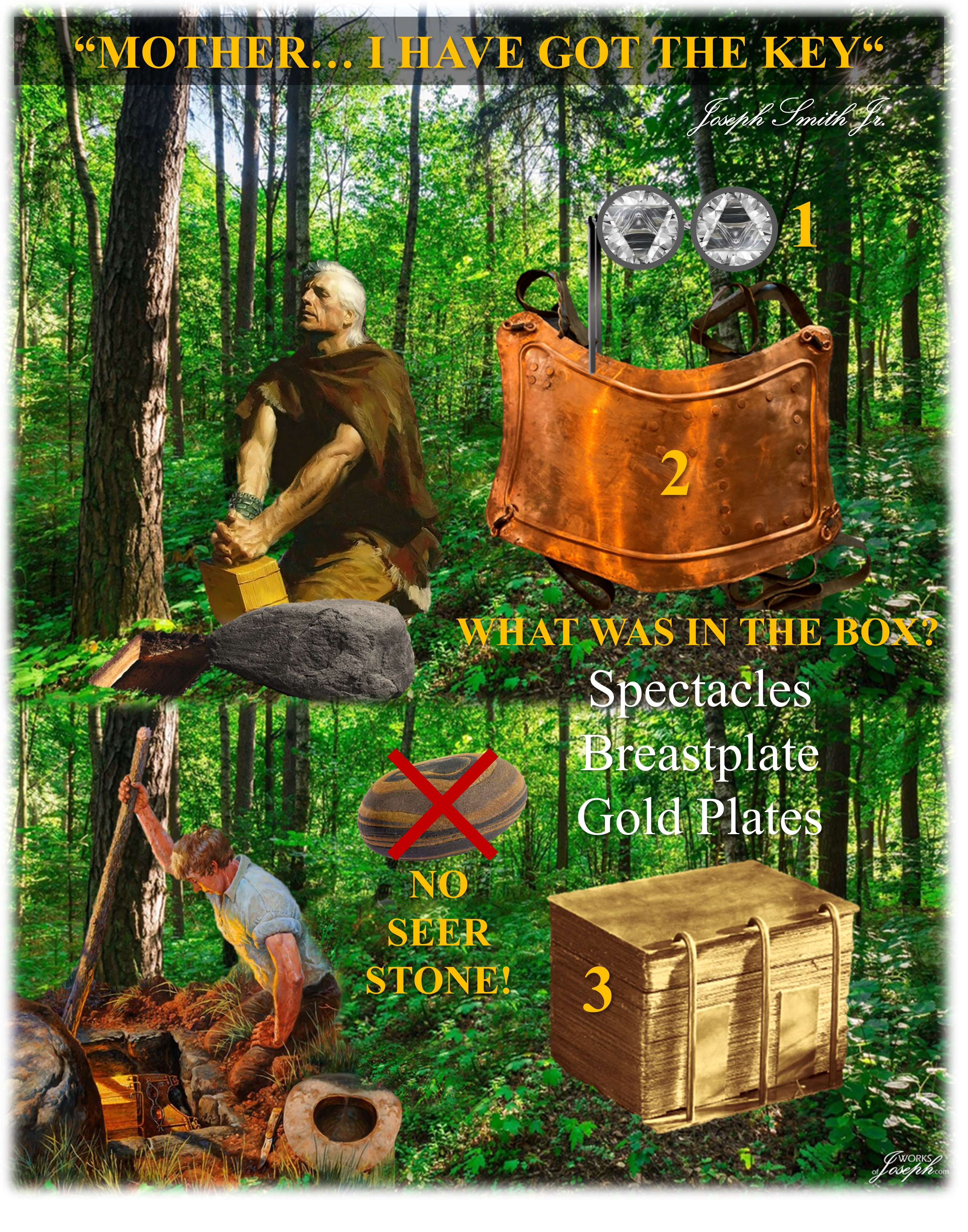 The Process of Translating the Book of Mormon by McConkie and Ostler continues, “Such an explanation is, in our judgment, simply fiction created for the purpose of demeaning Joseph Smith and to undermine the validity of the revelations he received after translating the Book of Mormon. We invite the reader to consider the following: First, for more than fifty years David Whitmer forthrightly rejected Joseph Smith, declaring him to be a fallen prophet. Though he never denied his testimony of the Book of Mormon, he rejected virtually everything else associated with the ministry of Joseph Smith and the restoration of the gospel. His rejection included both the Aaronic and Melchizedek Priesthoods, which were restored during the time the Book of Mormon was being translated and, of course, the revelations which would eventually constitute the Doctrine and Covenants. Second, according to David Whitmer’s account of how the Book of Mormon was translated, Joseph Smith was the instrument of transmission, while translation rested solely with the Lord. This is simply a reflection of the notion of divine dictation, which holds that every word of scripture comes from God himself. If David Whitmer’s account is to be accepted, revelation also includes spelling and punctuation. This notion is at odds with the explanation found in Doctrine and Covenants 8 and 9, which details how revelation comes. In this respect, Richard Anderson observed that Whitmer “after decades of reflection outside of the Church, concluded that no modification could possibly be made in any revelation. This highly rigid view of these revelations matched his highly rigid view of the origin of the Book of Mormon” (“By the Gift and Power of God,” 84).
The Process of Translating the Book of Mormon by McConkie and Ostler continues, “Such an explanation is, in our judgment, simply fiction created for the purpose of demeaning Joseph Smith and to undermine the validity of the revelations he received after translating the Book of Mormon. We invite the reader to consider the following: First, for more than fifty years David Whitmer forthrightly rejected Joseph Smith, declaring him to be a fallen prophet. Though he never denied his testimony of the Book of Mormon, he rejected virtually everything else associated with the ministry of Joseph Smith and the restoration of the gospel. His rejection included both the Aaronic and Melchizedek Priesthoods, which were restored during the time the Book of Mormon was being translated and, of course, the revelations which would eventually constitute the Doctrine and Covenants. Second, according to David Whitmer’s account of how the Book of Mormon was translated, Joseph Smith was the instrument of transmission, while translation rested solely with the Lord. This is simply a reflection of the notion of divine dictation, which holds that every word of scripture comes from God himself. If David Whitmer’s account is to be accepted, revelation also includes spelling and punctuation. This notion is at odds with the explanation found in Doctrine and Covenants 8 and 9, which details how revelation comes. In this respect, Richard Anderson observed that Whitmer “after decades of reflection outside of the Church, concluded that no modification could possibly be made in any revelation. This highly rigid view of these revelations matched his highly rigid view of the origin of the Book of Mormon” (“By the Gift and Power of God,” 84). By contrast Brigham Young observed, “Should the Lord Almighty send an angel to re-write the Bible, it would in many places be very different from what it now is. And I will even venture to say that if the Book of Mormon were now to be re-written, in many instances it would materially differ from the present translation” (Journal of Discourses, 9:311). David Whitmer repeatedly said that if a word was misspelled, the translator would not be able to go on until it had been corrected. This hardly allows for the 3,913 changes that have been made between the first edition of the Book of Mormon and the edition presently in use. Third, if the process of translation was simply a matter of reading from a seer stone in a hat, surely Oliver Cowdery could do that as well, if not better, than Joseph Smith. After all, Oliver was a schoolteacher. How then do we account for Oliver’s inability to translate? Further, regarding the use of a hat in translation, Joseph’s brother William Smith explained that the Prophet used the Urim and Thummim attached to the breastplate by a rod that held the seer stones set in the rims of a bow before his eyes. “The instrument caused a strain on Joseph’s eyes, and he sometimes resorted to covering his eyes with a hat to exclude the light in part” (Smith, Rod of Iron 1, 3 [February 1924]: 7). Fourth, Joseph Smith repeatedly testified to having both the plates and the Urim and Thummim returned to him.”
By contrast Brigham Young observed, “Should the Lord Almighty send an angel to re-write the Bible, it would in many places be very different from what it now is. And I will even venture to say that if the Book of Mormon were now to be re-written, in many instances it would materially differ from the present translation” (Journal of Discourses, 9:311). David Whitmer repeatedly said that if a word was misspelled, the translator would not be able to go on until it had been corrected. This hardly allows for the 3,913 changes that have been made between the first edition of the Book of Mormon and the edition presently in use. Third, if the process of translation was simply a matter of reading from a seer stone in a hat, surely Oliver Cowdery could do that as well, if not better, than Joseph Smith. After all, Oliver was a schoolteacher. How then do we account for Oliver’s inability to translate? Further, regarding the use of a hat in translation, Joseph’s brother William Smith explained that the Prophet used the Urim and Thummim attached to the breastplate by a rod that held the seer stones set in the rims of a bow before his eyes. “The instrument caused a strain on Joseph’s eyes, and he sometimes resorted to covering his eyes with a hat to exclude the light in part” (Smith, Rod of Iron 1, 3 [February 1924]: 7). Fourth, Joseph Smith repeatedly testified to having both the plates and the Urim and Thummim returned to him.”
[See my* Editor’s Note above in green]. He further testified that he translated from the plates by the use of the Urim and Thummim.
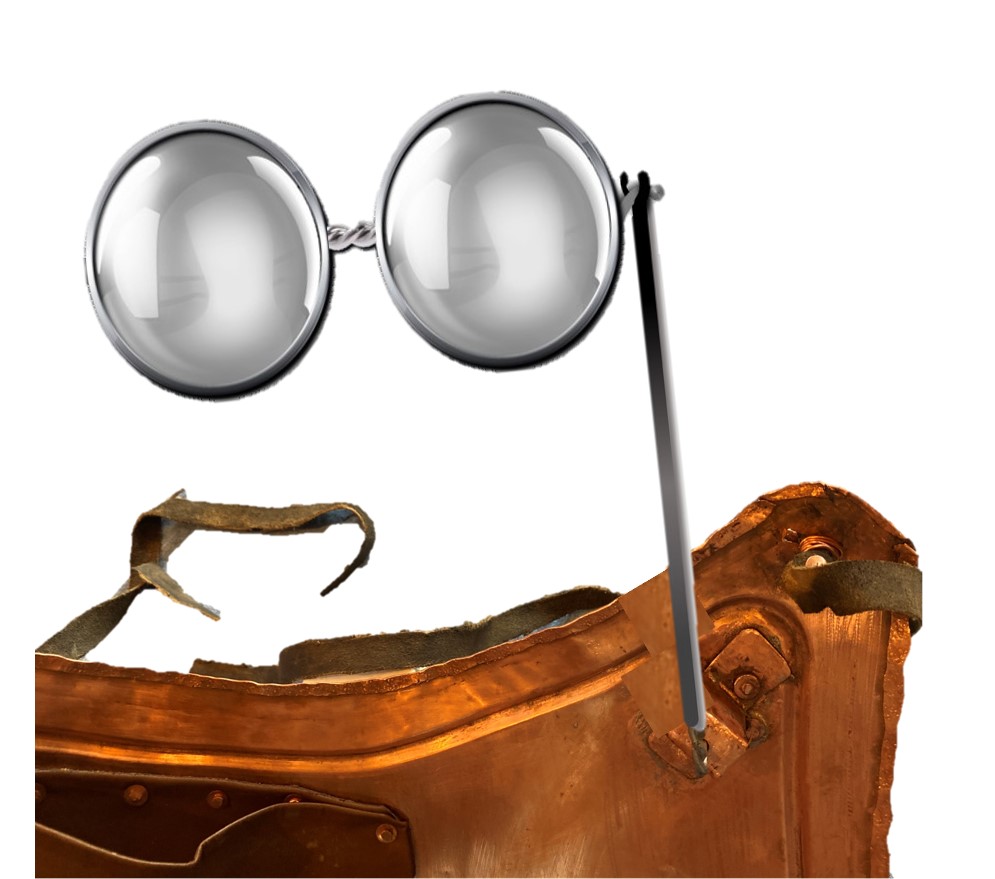
The Process of Translating the Book of Mormon by McConkie and Ostler continues, “Fifth, David Whitmer gave inconsistent accounts of the instrument used to translate. Thomas Wood Smith, in a published response about an interview he had with David Whitmer, who told him that Joseph Smith used the Urim and Thummim in translating the Book of Mormon, wrote, “When I first read Mr. Traughber’s paper in the Herald of November 15th, I thought that I would not notice his attack at all, as I supposed that I was believed by the Church to be fair and truthful in my statements of other men’s views, when I have occasion to use them, and I shall make this reply only: That unless my interview with David Whitmer in January, 1876, was only a dream, or that I failed to understand plain English, I believed then, and since, and now, that he said that Joseph possessed, and used the Urim and Thummim in the translation of the inscriptions referred to, and I remember of being much pleased with that statement, as I had heard of the ‘Seer stone’ being used. And unless I dreamed the interview, or very soon after failed to recollect the occasion, he described the form and size of the said Urim and Thummim. The nearest approach to a retraction of my testimony as given . . . publicly in many places from the stand from January 1876, till now, is, that unless I altogether misunderstood ‘Father Whitmer’ on this point, he said the translation was done by the aid of the Urim and Thummim. If he says he did not intend to convey such an impression to my mind, then I say I regret that I misunderstood him, and unintentionally have misrepresented him. But that I understood him as represented by me frequently I still affirm” (as cited in Cook, David Whitmer Interviews, 56). Finally, the testimony of David Whitmer simply does not accord with the divine pattern. If Joseph Smith translated everything that is now in the Book of Mormon without using the gold plates, we are left to wonder why the plates were necessary in the first place. It will be remembered that possession of the plates placed the Smith family in considerable danger, causing them a host of difficulties. If the plates were not part of the translation process, this would not have been the case. It also leaves us wondering why the Lord directed the writers of the Book of Mormon to make a duplicate record of the plates of Lehi. This provision which compensated for the loss of the 116 pages would have served no purpose either.
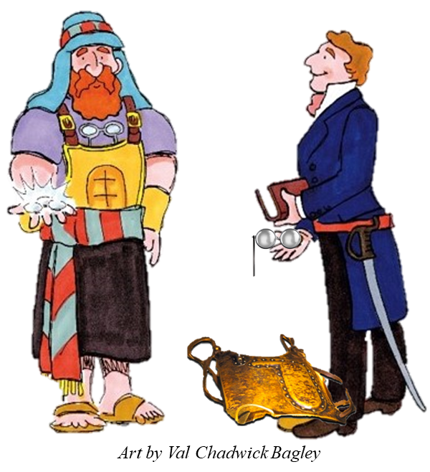
Further, we would be left to wonder why it was necessary for Moroni to instruct Joseph each year for four years before he was entrusted with the plates. We would also wonder why it was so important for Moroni to show the plates to the three witnesses, including David Whitmer. And why did the Lord have the Prophet show the plates to the eight witnesses? Why all this flap and fuss if the Prophet didn’t really have the plates and if they were not used in the process of translation? What David Whitmer is asking us to believe is that the Lord had Moroni seal up the plates and the means by which they were to be translated hundreds of years before they would come into Joseph Smith’s possession and then decided to have the Prophet use a seer stone found while digging a well so that none of these things would be necessary after all. Is this, we would ask, really a credible explanation of the way the heavens operate? When asked how the labor of translation was accomplished, the Prophet declined to answer, saying, “It was not intended to tell the world all the particulars of the coming forth of the book of Mormon” (Cannon and Cook, Far West Record, 23).
Surely we do not look to the world or the understanding of the world for an answer. We would expect to find that understanding only as we come to understand in greater measure the operations of the Spirit of revelation.” The Process of Translating the Book of Mormon by Joseph Fielding McConkie (Professor of Ancient Scripture, BYU) and Craig J. Ostler (Assistant Professor of Church History and Doctrine, BYU) Color and Italics and Bold added. Full Article here.
Dr. Ostler’s Video Presentation
View a video from our Firm Foundation Conference by Dr. Craig J Ostler about the proper method of translation titled: “Book of Mormon Translation Instrument Descriptions-Interpreters, Urim & Thummim, and Seer Stones” 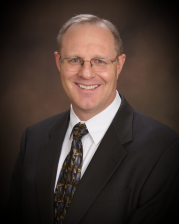
Bio: Dr. Ostler is a Professor of Church History and Doctrine at Brigham Young University. Many years ago he served in the Bogotá, Colombia mission, and married his sweetheart soon after returning home. He and his wife, Sandy, have 7 children, 21 grandchildren, and counting. He has served in mostly teaching capacities in his Church callings, but also as a bishop and on three Stake High Councils. He was a committee member for the Church curriculum that has grown to become the “Come Follow Me.” material. He is currently as of June, 2022 as a Mission President in Laredo, Texas.
Subscribers click here to watch video
Sign-up for a subscription to watch here
Canonized Scriptures and First Hand Quotes
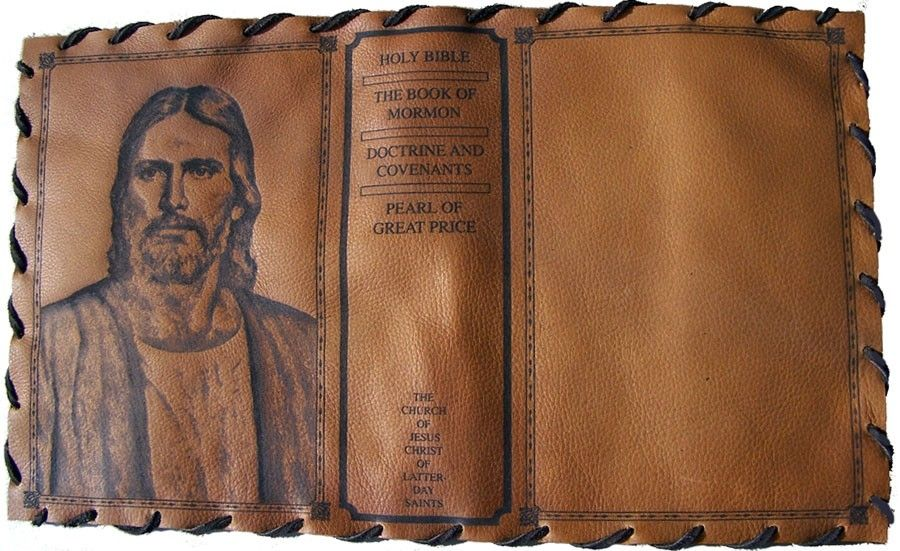 JSH 1:34 “He said there was a book deposited, written upon gold plates, giving an account of the former inhabitants of this continent, and the source from whence they sprang. He also said that the fulness of the everlasting Gospel was contained in it, as delivered by the Savior to the ancient inhabitants; 35 Also, that there were two stones in silver bows—and these stones, fastened to a breastplate, constituted what is called the Urim and Thummim—deposited with the plates; and the possession and use of these stones were what constituted “seers” in ancient or former times; and that God had prepared them for the purpose of translating the book.”
JSH 1:34 “He said there was a book deposited, written upon gold plates, giving an account of the former inhabitants of this continent, and the source from whence they sprang. He also said that the fulness of the everlasting Gospel was contained in it, as delivered by the Savior to the ancient inhabitants; 35 Also, that there were two stones in silver bows—and these stones, fastened to a breastplate, constituted what is called the Urim and Thummim—deposited with the plates; and the possession and use of these stones were what constituted “seers” in ancient or former times; and that God had prepared them for the purpose of translating the book.”
JSH 1:75* “Oliver Cowdery describes these events thus: “These were days never to be forgotten—to sit under the sound of a voice dictated by the inspiration of heaven, awakened the utmost gratitude of this bosom! Day after day I continued, uninterrupted, to write from his mouth, as he translated with the Urim and Thummim, or, as the Nephites would have said, ‘Interpreters,’ the history or record called ‘The Book of Mormon.’”
Where’s the Breastplate?
In my opinion it is not possible that Joseph used a stone in a hat to translate, as the scriptures tell us he clearly used the two stones fastened to a breastplate above. The question I ask you is, where was the BREASTPLATE during Joseph’s translation and how would he keep his promise to not show the plates, the breastplate nor the spectacles to anyone as stated here:? “Again, he told me, that when I got those plates of which he had spoken—for the time that they should be obtained was not yet fulfilled—I should not show them to any person; neither the breastplate with the Urim and Thummim; only to those to whom I should be commanded to show them; if I did, I should be destroyed”. JSH 1:42.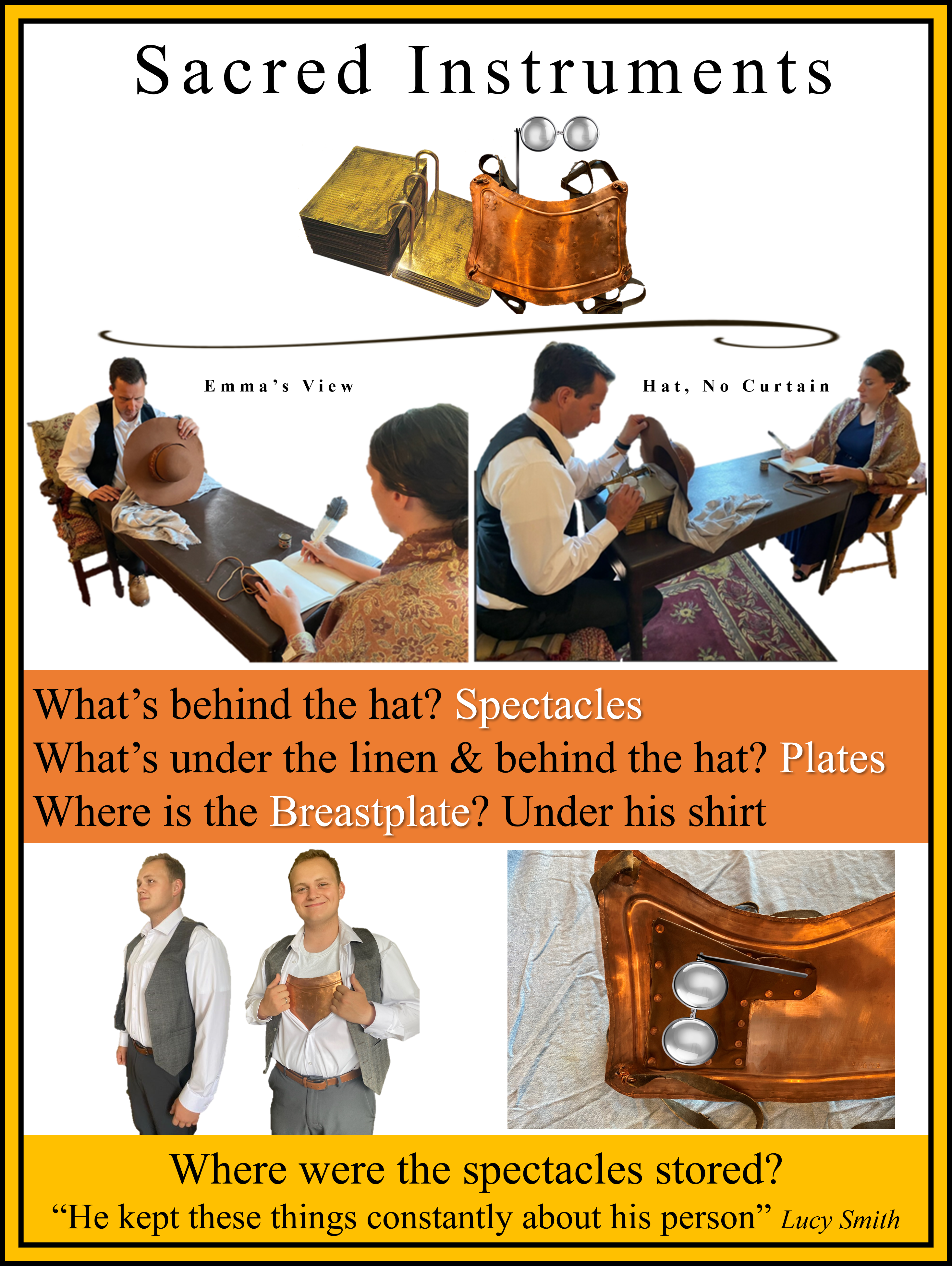 Lucy Mack Smith said, “That of which I spoke, which Joseph termed a key, was indeed nothing more nor less than a Urim and Thummim by which the angel manifested those things to him that were shown him in, vision; by which also he could at any time ascertain the approach of danger, either to himself or the record, and for this cause he kept these things constantly about his person.” Lucy Mack Smith.
Lucy Mack Smith said, “That of which I spoke, which Joseph termed a key, was indeed nothing more nor less than a Urim and Thummim by which the angel manifested those things to him that were shown him in, vision; by which also he could at any time ascertain the approach of danger, either to himself or the record, and for this cause he kept these things constantly about his person.” Lucy Mack Smith.
Because of the commandment of the Lord to not show the plates, spectacles or breastplate to anyone, I  believe in this painting by Ann Marie Oborn that I commissioned, may be how Joseph kept that directive: During translation I propose Joseph used a farmer’s hat that he probably wore daily to work on the farm. (picture right). A young boy would most likely only use a stove pipe hat for a dance or for proper attire, but his working hat would be with him almost constantly you would think. This hat I believe was not used with a stone in it, but as a tool or prop to hide the two stones in a bow or the spectacles from the view of the scribe, as you see in the picture below. The hat is nothing more than a prop to block out Emma’s vision. Joseph could also keep his promise to not show the breastplate (under his shirt. More discussed below), or the spectacles hidden from view by the hat but not in the hat; and the plates lay partially covered so Emma could not see them from her angle of view. See Photograph from Emma’s point of view below:
believe in this painting by Ann Marie Oborn that I commissioned, may be how Joseph kept that directive: During translation I propose Joseph used a farmer’s hat that he probably wore daily to work on the farm. (picture right). A young boy would most likely only use a stove pipe hat for a dance or for proper attire, but his working hat would be with him almost constantly you would think. This hat I believe was not used with a stone in it, but as a tool or prop to hide the two stones in a bow or the spectacles from the view of the scribe, as you see in the picture below. The hat is nothing more than a prop to block out Emma’s vision. Joseph could also keep his promise to not show the breastplate (under his shirt. More discussed below), or the spectacles hidden from view by the hat but not in the hat; and the plates lay partially covered so Emma could not see them from her angle of view. See Photograph from Emma’s point of view below:
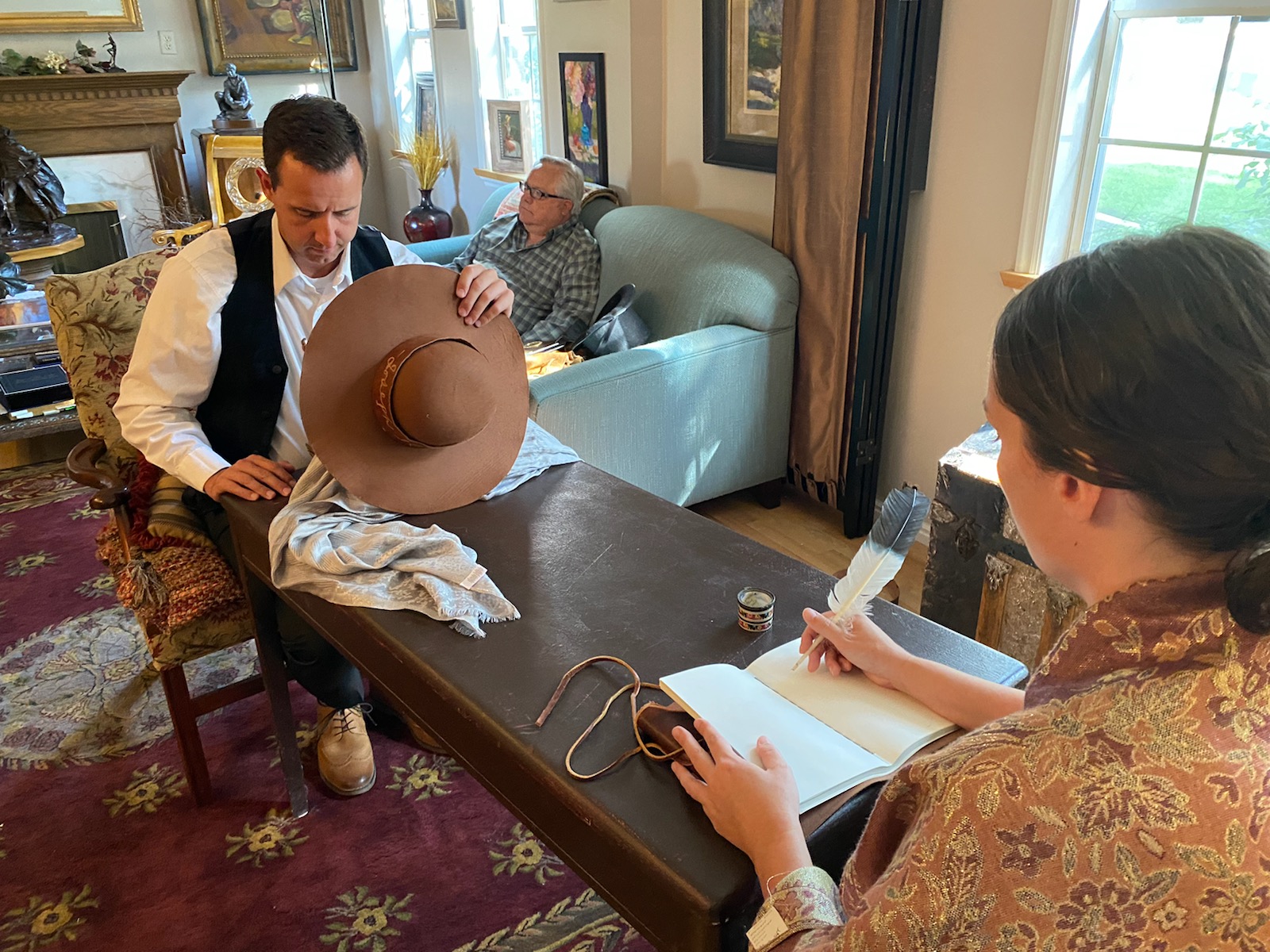
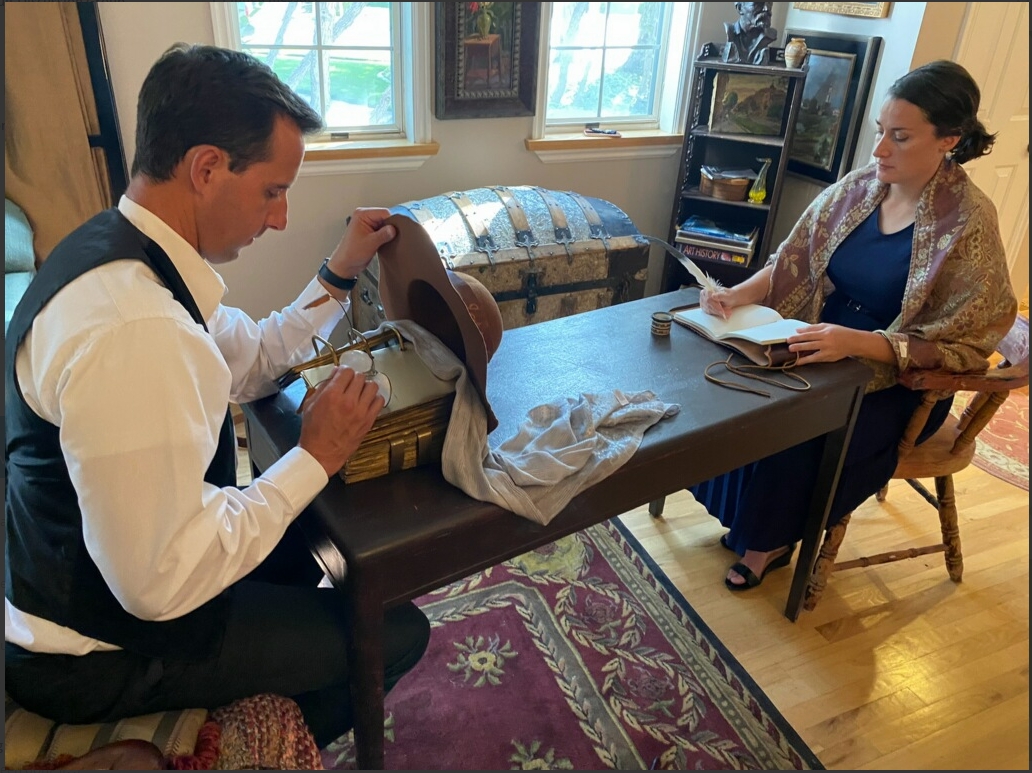
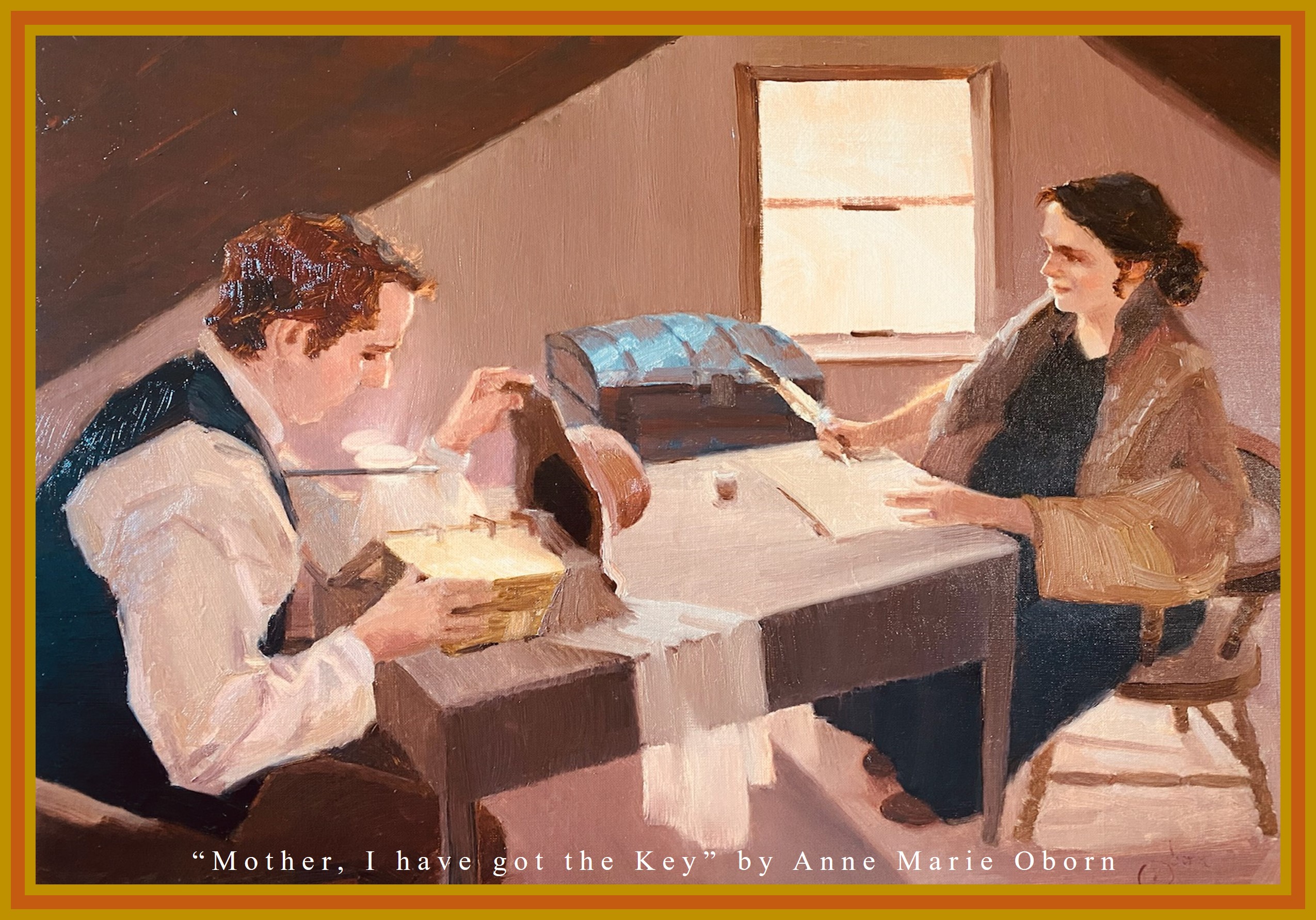

Curtain Not Used
By Elder Neal A. Maxwell Of the Quorum of the Twelve Apostles “With regard to the physical circumstances of the Prophet Joseph Smith and his scribe, Martin Harris was quoted as saying there was a blanket or curtain hung between himself and Joseph during the translation process. If Martin is accurately quoted, perhaps this occurred when the Prophet was copying characters directly from the plates in the sample to be taken to Professor Charles Anthon, since the dates mentioned are several months before Martin Harris’s brief scribal duties began. I say this because although David Whitmer mentions a blanket being used—it was only to partition off the living area in order to keep both the translator and scribe from the eyes of visitors. (see David Whitmer Interviews: A Restoration Witness, ed. Lyndon W. Cook, [1991], 173).
Elder Maxwell continues, “In fact, Elizabeth Anne Whitmer Cowdery, Oliver’s wife, said, “Joseph never had a curtain drawn between him and his scribe” (quoted in John W. Welch and Tim Rathbone, “The Translation of the Book of Mormon: Basic Historical Information,” F.A.R.M.S. report WRR–86, p. 25). Emma likewise said of her days as scribe, early on, that Joseph dictated “hour after hour with nothing between us” (“Last Testimony of Sister Emma,” 289). Of course, the real revelatory process involved Joseph’s mind and faith, which could not be seen by others in any case.” By the Gift and Power of God Neal A. Maxwell 1997 Ensign.
A Demonstration? Use Made of a Blanket?
“In order to give privacy to the proceeding a blanket, which served as a portière, was stretched across the family living room to shelter the translators and the plates from the eyes of any who might call at the house while the work was in progress. This, Mr. Whitmer says, was the only use made of the blanket, and it was not for the purpose of concealing the plates or the translator from the eyes of the amanuensis. In fact, Smith was at no time hidden from his collaborators, and the translation was performed in the presence of not only the persons mentioned, but of the entire Whitmer household [?] and several of Smith’s relatives besides.” David Whitmer, as interviewed by the Chicago Tribune (1885). “The Book of Mormon,” Chicago Tribune, December 17, 1885 (Color and Parenthesis added)
This next information goes along with what Elder Maxwell quoted above in blue text about a blanket that David Whitmer mentioned. In regards to the above quote, my good friend and associate Jonathan Neville believes it is possible [?] that Joseph Smith showed many of the Whitmer’s a demonstration of the stone in the hat. It is a very interesting idea, but I don’t think it is correct. In my opinion I have a question about Joseph showing a demonstration to appease others curiosity and I don’t think that was necessary. I don’t think Joseph was obligated to show anyone a sneak preview so to speak. As you read my idea about the breastplate under Joseph’s shirt below, and the spectacles hidden with the hat as a prop only, I think it is a better possibility. It seems possible that some may have seen Joseph with his head in a hat, but they never saw what was in the hat. They were just guessing. As usual, you all can decide for yourself, and you can also contribute and share with Jonathan or myself what you feel happened. None of us know for sure.
Jonathan and I are in total agreement otherwise, as Jonathan said, “The story that doesn’t work is the currently popular narrative that Joseph Smith never translated anything, that he merely read words off a stone in a hat (and it doesn’t matter whether that was a “peep stone” he found in a well or the spectacles, if he didn’t even use the plates), and Joseph and Oliver misled people by claiming he translated the engravings on the plates by means of the Nephite interpreters.” Jonathan Neville (bold and color added)
In speaking about the demonstration, Jonathan says, “He [Joseph Smith] realized he could just do a demonstration of the process by just reciting Isaiah from memory. So he went downstairs, put the stone in the hat, recited Isaiah, and the three scribes wrote it as fast as they could to keep up… On this one occasion, the demonstration, he was dictating so fast that he had three scribes and they were getting tired and had to take turns, which is not the normal manner of translation. That’s why I propose, anyway, that he was reciting from memory looking at the stone in the hat.” Jonathan Neville, A Man that can Translate
Why I don’t Believe the Demonstration Idea
- Joseph wouldn’t allow the perception that his demonstration was the actual translation being shown if it wasn’t. It seems deceiving.
- As Joseph was told to not show the plates, or the breastplate or the spectacles, none of those who participated in the demonstration saw any of that. Maybe they saw the rock and the hat, but why would Joseph want them to see a rock in a hat?
- I don’t necessarily believe the David Whitmer quote from the Chicago Tribune above, that a blanket covered the front of the first story room so others could not see if they came to the door. Just how long did this demonstration last? Wouldn’t the blanket make neighbors even more curious as to what was going on?
- The Chicago quote says that each time they would open with a prayer. How many times did they do the demonstration and how much time did the Whitmer’s loose on their farm work? Did the demonstration go on for a few days or a few weeks?
- Why would Joseph recite Isaiah from memory as Jonathan says, and have Whitmer’s and others write it down during the demonstration, as Joseph supposedly read the stone in a hat with his memorized lines of Isaiah?
- Why would Joseph have unauthorized scribes to actually write down some of Isaiah that Joseph had memorized, or even let the scribes know that some of Isaiah’s words were contained in the Book of Mormon?
- Why would Joseph have to show the demonstration and have it include sacred writings that the others could hear?
- The demonstration says nothing about the breastplate. Where was it and didn’t Joseph need it to translate every time?
- Jonathan doesn’t mention how the breastplate was used with the spectacles, but I feel the two items had to be used together as many scriptures speak to that method.
Martin Harris Needed a Curtain?
I believe Martin Harris was very superstitious, nervous and scared of consequences. The way he acted would seem to me that he made Joseph put a curtain between them as Martin wanted no chance of himself accidently seeing the plates, breastplate or spectacles. Martin seemed he was afraid that he may meet his utter destruction as the Lord warned Joseph. “Harris declares, that when he acted as amanuensis, and wrote the translation, as Smith dictated, such was his fear of the Divine displeasure that a screen (sheet) was suspended between the prophet and himself. “Gold Bible, No. 6.” The Reflector (Palmyra, New York) 2, no. 16 (19 March 1831): 126–27.
[Martin Harris] says “he wrote a considerable part of the book, as Smith dictated, and at one time the presence of the Lord was so great, that a screen was hung up between him and the Prophet; at other times the Prophet would sit in a different room, or up stairs, while the Lord was communicating to him the contents of the plates. He does not pretend that he ever saw the wonderful plates but once, although he and Smith were engaged for months in deciphering their contents.” Eber D. Howe, Mormonism Unvailed (Painesville, OH, 1834) Based on reports by Doctor Philastus Hurlbut. Eber D. Howe (non-eyewitness), paraphrasing Martin Harris (eyewitness) in Mormonism Unvailed.
Many people listened to Martin Harris who had never seen the translation and wrote articles about Martin who said there was a curtain. But how could Martin ever know what was going on with the actual translation? Most of those people who quoted Martin were from Newspapers, or Apostates, and Authors and other people who seemed to have an animus towards the Prophet. The book Mormonism Unvailed was printed in 1834 and had all kinds of scandalous things about Joseph and he was even said to be a part of the occult. These ideas permeated the entire area near where Joseph lived. I doubt highly the words of Martin Harris and David Whitmer about the rock in the hat story and I only feel at times a curtain was used only with Martin Harris. Since Martin did not translate again after the lost 116 pages a curtain would never be used anyway, as Emma and Ann Cowdery said above.
Joseph Had Several Stones
In my opinion this may very well be the answer to Emma’s quote below about her statement, that the stone was in Joseph’s hat. Most people by now knew Joseph had a seer stone or two, but no one said they saw Joseph use it to translate, they probably just assumed he used it, as they knew he had one. Here is some information from BYU Religious Studies Center, 2016 about Joseph apparently having several seer stones. In this book titled, Joseph Smith’s Seer Stones the authors say, “This connection between Native Americans and Joseph Smith’s religious endeavors extended to his brown and white seer stones. William Stafford claimed that someone might find a stone in brass kettles or certain kinds of pots buried in the mounds, insisting that seer stones were being recovered that had a Native American origin. These artifacts were very clearly man-made items, and if a seer stone was found within a kettle, then it must have had some value or purpose as evidenced by the belief that the hands of those who made the kettle must have placed the stone inside. Brigham Young likely had these Native American kettles in mind when he stated that “[Joseph] got [the seer stone] in an Iron kettle 15 feet under ground.” Wayne Sentinel, 27 December 1825 Apparently, the idea of Joseph Smith’s seer stones being anciently deposited by Native Americans became a natural assumption for some and suggested a similar origin for the Nephite interpreters. According to Joseph’s narrative, the Nephite interpreters originated with the ancient American inhabitants, as the ancient prophet Moroni *supposedly placed them in the ground for Joseph to find. At least one of the other two seer stones also shows signs of being prepared anciently…
[*Editors Note: I don’t agree with the book using the term supposedly, as it is very well understood that Moroni placed the artifacts in the Hill Cumorah, the same ones the Brother of Jared gave to him. Moroni said in Ether 4:5, “Wherefore the Lord hath commanded me to write them; and I have written them. And he commanded me that I should them up; and he also hath commanded that I should seal up the interpretation thereof; wherefore I have sealed up the , according to the commandment of the Lord.].”
Joseph Smith’s Seer Stones continues, “Before the Book of Mormon provided the narrative, Joseph Smith’s brown and white stones were artifacts of an ancient past and an expression of his religious devotion in the nineteenth century. Before 1827, the meaning of the brown and white seer stones was less defined, but there is no indication that they were viewed as irreligious artifacts…” Joseph Smith’s Seer Stones/ Michael Hubbard MacKay and Nicholas J. Frederick. BYU Religious Studies Center, 2016. Chapter Title: Seer Stones: Ancient Roots and Religious Significance Remember, Emma is never quoted as seeing the single stone in Joseph’s hat, just that she assumed the stone was in there. Remember also, Joseph did have several single seer stones one white and one brown  [picture left], that he found in a well. I also add that this last testimony of Emma’s was written by Joseph Smith III who interviewed Emma Hale Smith shortly before her death which occurred on April 30, 1879 and the interview was published in the October 1, 1879 edition of The Saints Herald.
[picture left], that he found in a well. I also add that this last testimony of Emma’s was written by Joseph Smith III who interviewed Emma Hale Smith shortly before her death which occurred on April 30, 1879 and the interview was published in the October 1, 1879 edition of The Saints Herald.
It was published 5 months after her death, so she did not have the opportunity to review the published statement as correct. Joseph Smith III did say he read Emma’s testimony back to her, and he said that she said it was correct, but we have no way of proving that. Emma said, “I know Mormonism to be the truth; and believe the Church to have been established by divine direction. I have complete faith in it. In writing for your father I frequently wrote day after day, often sitting at the table close by him, he sitting with his face buried in his hat, with the stone in it, and dictating hour after hour with nothing between us.” Last Testimony of Sister Emma Saint’s Herald, Vol. 26, No 19. p. 289. (1 October 1879) Remember the picture above that shows Emma’s view as Joseph translates. Joseph was told not to show the items to anyone, so the farmers hat in front of the spectacles to block out Emma’s view makes a lot of sense to me. Perhaps this is why the scholars and other BYU Historians claim the stone was “in the hat.” It would be easy for someone to see Joseph translating while only seeing the view of the hat and Joseph looking into it. No one claimed to have seen the actual stone or the spectacles, but they only could see the hat. It would be easy to come to a conclusion that Joseph’s head was “buried in a hat” looking at something they called a seer stone, while never really seeing that Joseph was actually looking through the two stones fastened to a breastplate. These stones were not in the hat, but the hat was blocking their view in order for Joseph to keep his promise of never revealing the Interpreters to anyone. To understand the correct method of translation and the most accurate, we should depend on the many scriptures that tell us that Joseph translated with the use of the spectacles fastened to the breastplate. Nowhere in all the scriptures does it say that Joseph used a stone in a hat. Why repeat a theory when we have the scriptures as our guide? Download a list of 16 quotes, including 8 scriptures that validate this proper method of translation below.
Book of Mormon Hard Evidence Proper TranslationShirt, Hat, and Linen
 Yes, the Prophet of the Lord kept his promise not to show anyone these articles the best way he knew how with his shirt, the hat, and the linen; These perhaps became special articles of the translation and a special part of the” Gift and Power of God”. How marvelous are these spectacles. I quote from the Joseph Smith Papers of Lucy Mack Smith saying, “After breakfast [on the day he received the plates and the urim and thummim] Joseph [Smith] called me into the other room and he set his foot on the bed and leaned his head on his hand and says,… “it is ten times better then I expected.” Then he went on to tell the length and width and thickness of the plates, and said he, “they appear to be gold.” But he seemed to think more of the glasses or the urim and thummim than he did of the plates, for, says he, “I can see anything; they are marvelous.“ (“Joseph Knight’s Recollection of Early Mormon History,” BYU Studies, Vol. 17, No. 1; spelling modernized by Lucy Mack Smith. The glasses were “marvelous”, not a stone. Repeatedly we hear glasses and spectacles which could never be a single stone.
Yes, the Prophet of the Lord kept his promise not to show anyone these articles the best way he knew how with his shirt, the hat, and the linen; These perhaps became special articles of the translation and a special part of the” Gift and Power of God”. How marvelous are these spectacles. I quote from the Joseph Smith Papers of Lucy Mack Smith saying, “After breakfast [on the day he received the plates and the urim and thummim] Joseph [Smith] called me into the other room and he set his foot on the bed and leaned his head on his hand and says,… “it is ten times better then I expected.” Then he went on to tell the length and width and thickness of the plates, and said he, “they appear to be gold.” But he seemed to think more of the glasses or the urim and thummim than he did of the plates, for, says he, “I can see anything; they are marvelous.“ (“Joseph Knight’s Recollection of Early Mormon History,” BYU Studies, Vol. 17, No. 1; spelling modernized by Lucy Mack Smith. The glasses were “marvelous”, not a stone. Repeatedly we hear glasses and spectacles which could never be a single stone.
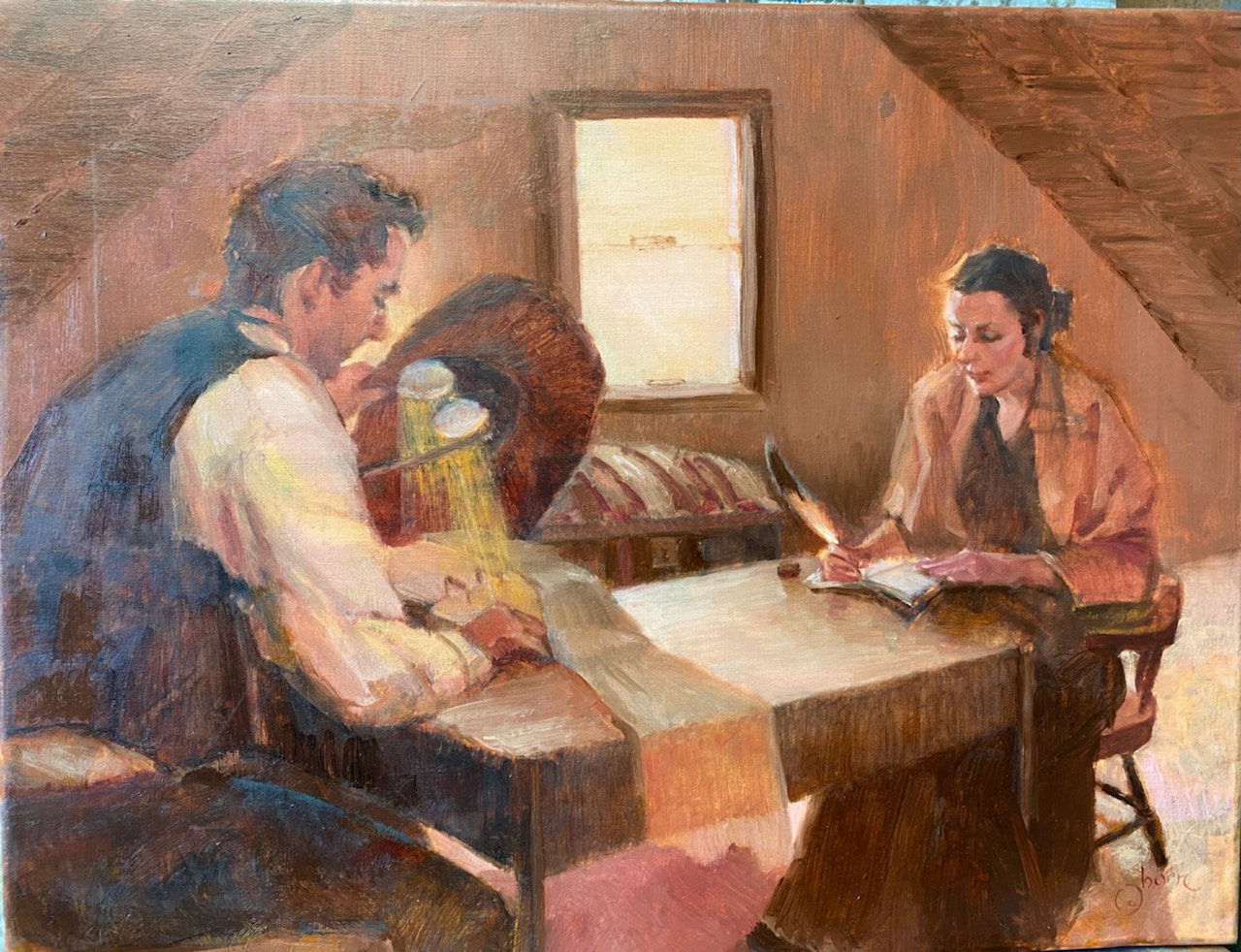
Lucy also said, “That of which I spoke, which Joseph termed a key, was indeed nothing more nor less than a Urim and Thummim by which the angel manifested those things to him that were shown him in vision; by which also he could at any time ascertain the approach of danger, either to himself or the record, and for this cause he kept these things constantly about his person.” (History of Joseph Smith, Revised and Enhanced, p. 139, 145) I know in my heart, the title of the first art I had painted is, “Mother”, I have got the Key” as Lucy is quoted above. This Key; (Spectacles) unlocked the Heart (Breastplate), so to speak, acting as a Key unlocking Joseph’s mind and heart so he by the “Gift and Power of God” could translate this special book. How I love the Book of Mormon, another witness of Jesus Christ.
The words of Joseph Fielding Smith below are very powerful and reflect my feelings about the way Joseph Smith exercised the “Gift and Power of the Holy Ghost.”
Who Saw the Plates, Breastplate and Spectacles?
I believe there were only three people who actually saw all three items that Joseph found in Hill Cumorah. The gold plates, the breastplate, and the spectacles. They were Joseph Smith, Oliver Cowdery and Lucy Mack Smith. Lucy saw the spectacles and the breastplate under a linen as Joseph let her hold and feel them covered, as recorded in Lucy’s own history I share with you below, published in 1845.

The “Key” that Joseph kept Constantly about his Person
Joseph Smith said, “Also, that there were two stones in silver bows—and these stones, fastened to a breastplate, constituted what is called the Urim and Thummim—deposited with the plates; and the possession and use of these stones were what constituted “seers” in ancient or former times; and that God had prepared them for the purpose of translating the book.” JSH 1:35 Oliver said, “I wrote with my own pen, the entire Book of Mormon (save a few pages) as it fell from the lips of the Prophet Joseph Smith, as he translated it by the gift and power of God, by means of the Urim and Thummim, or, as it is called by the book, “holy interpreters.” October 21, 1848, Oliver Cowdery Speaking at a Conference at Kanesville High Council 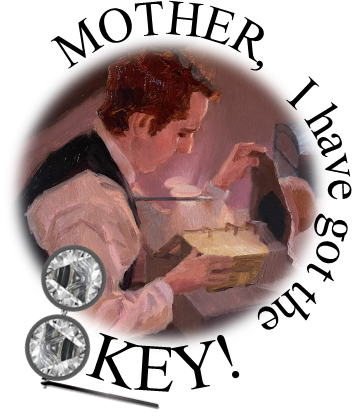 According to his mother, Joseph Smith kept the “Key” ‘constantly about his person’. According to Lucy Mack Smith, The “Key“ is the two stones, (that came from the Brother of Jared (Ether 3:22-24) in silver bows, fastened to the breastplate that were found by Joseph in the stone box with the plates at Hill Cumorah. I believe the witness of Lucy Mack Smith and the scripture in JSH 1:35, more than I believe Martin Harris, David Whitmer, or Emma Smith in their statements about a stone in a hat. They never saw the items used for translation as Oliver & Joseph did. Most people knew Joseph had a stone or two, but there is no record of anyone firsthand who saw Joseph use his stone to translate. There is no scripture that mentions a stone in a hat for translation. I believe the scriptures. JSH 1: 35, 52, 62, 75* Mosiah 28: 13, 20 Ether 3: 22-23; 4:5 Alma 37:21, 24-25.
According to his mother, Joseph Smith kept the “Key” ‘constantly about his person’. According to Lucy Mack Smith, The “Key“ is the two stones, (that came from the Brother of Jared (Ether 3:22-24) in silver bows, fastened to the breastplate that were found by Joseph in the stone box with the plates at Hill Cumorah. I believe the witness of Lucy Mack Smith and the scripture in JSH 1:35, more than I believe Martin Harris, David Whitmer, or Emma Smith in their statements about a stone in a hat. They never saw the items used for translation as Oliver & Joseph did. Most people knew Joseph had a stone or two, but there is no record of anyone firsthand who saw Joseph use his stone to translate. There is no scripture that mentions a stone in a hat for translation. I believe the scriptures. JSH 1: 35, 52, 62, 75* Mosiah 28: 13, 20 Ether 3: 22-23; 4:5 Alma 37:21, 24-25.
Lucy’s Own Words
“Early in the morning of September 23, 1837, Joseph returned home from Hill Cumorah after retrieving the plates, spectacles, and breastplate. As Joseph entered the house, Lucy Mack Smith said, “I trembled so much with fear lest all might be lost again by some small failure in keeping the commandments, that I was under the necessity of leaving the room to conceal my feelings. Joseph saw this and followed me. Mother, said he. Do not be uneasy. All is right. See here, said he, I have got the key. I knew not what he meant, but took the article in my hands and, examining it with no covering but a silk handkerchief, found that it consisted of two smooth three-cornered diamonds set in glass, and the glasses were set in silver bows connected with each other in much the same way that old-fashioned spectacles are made. [See Picture Below].


He took them again and left me but did not tell me anything of the record…. That of which I spoke, which Joseph termed a key, was indeed nothing more nor less than a Urim and Thummim by which the angel manifested those things to him that were shown him in vision; by which also he could at any time ascertain the approach of danger, either to himself or the record, and for this cause, he kept these things constantly about his person.” (History of Joseph Smith, p. 139, 145 (JSP- Lucy Mack Smith, History, 1845; ) “After bringing home the plates, Joseph now commenced work with his father on the farm in order to be as near as possible the treasure that was committed to his care. Soon after this, he came in from work one afternoon, and after remaining a short time, he put on his great coat and left the house. I was engaged at the time in an upper room in preparing some oil cloths for painting. When he returned, he requested me to come downstairs. I told him that I could not leave my work just then, yet upon his urgent request, I finally concluded to go down and see what he wanted, upon which he handed me the breastplate spoken of in his history. It was wrapped in a thin muslin handkerchief, so thin that I could see the glistening metal and ascertain its proportions without any difficulty. It was concave on one side and convex on the other and extended from the neck downwards as far as the center of the stomach of a man of extraordinary size. It had four straps of the same material for the purpose of fastening it to the breast, two of which ran back to go over the shoulders, and the other two were designed to fasten to the hips. They were just the width of two of my fingers (for I measured them), and they had holes in the end of them to be convenient in fastening. The whole plate was worth at least five hundred dollars. After I had examined it, Joseph placed it in the chest [See Below] with the Urim and Thummim.” Lucy Mack Smith, History, 1844–1845

“I have myself seen and handled the golden plates; they are about eight inches long, and six wide; some of them are sealed together and are not to be opened, and some of them are loose. They are all connected by a ring which passes through a hole at the end of each plate and are covered with letters beautifully engraved. I have seen and felt also the Urim and Thummim. They resemble two large bright diamonds set in a bow like a pair of spectacles. My son puts these over his eyes when he reads unknown languages, and they enable him to interpret them in English. I have likewise carried in my hands the sacred breastplate. It is composed of pure gold and is made to fit the breast very exactly.” Lucy Mack Smith (in Henry Caswall, The City of the Mormons; or, Three Days at Nauvoo, in 1842, 2nd ed. revised and enlarged, (London: J. G. F. & J. Rivington, 1843), 26) Books and Art at bookofmormonevidence.org/bookstore.
An Account from William Smith:

“Among other things we inquired minutely about the Urim and Thummim and the breastplate. We asked him what was meant by the expression “two rims of a bow,” which held the former. He said a double silver bow was twisted into the shape of the figure eight, and the two stones were placed literally between the two rims of a bow. At one end was attached a rod which was connected with the outer edge of the right shoulder of the breast-plate. By pressing the head a little forward, the rod held the Urim and Thummim before the eyes much like a pair of spectacles. A pocket was prepared in the breastplate on the left side, immediately over the heart. When not in use the Urim and Thummim was placed in this pocket, the rod being of just the right length to allow it to be so deposited. This instrument could, however, be detached from the breastplate and his brother said Joseph often wore it detached when away from home, but always used it in connection with the breastplate when receiving official communications, and usually so when translating as it permitted him to have both hands free to hold the plates.” (J. W. Peterson in The Rod of Iron I:3 (February 1924), 6—7.)
Evidence Joseph had the Breastplate and Spectacles Upon his Person
From the Joseph Smith Papers website we read, “We went to Emma Joseph’s wife and asked her if she knew ought of the record whether Joseph had taken them out or where they were. She said she did not know. He then related what he had seen and heard. Emma said she did not know what to do, but she thought Joseph was to have the record… He sent William for the horse who brought him up with a large hickory withe around his neck as it was necessary according to law to put a withe round the neck of a stray horse before turning him into an inclosure— And Emma was soon on her way to her husband. He was in the well when she arrived but having a sudden impression of to get out of the well he came up and met her. When she found him, she informed of the situation of affairs at home and he went immediately inform to Mrs. Wells and told her that he must return home to attend to some important business. She was not willing for him to leave but upon his promising to come back when he was at liberty again she consented and sent a boy to bring him a horse, which he mounted in his linen frock, with his wife by his side with her horse in decorated as before with a green hickory withe on his neck. And thus they rode through the village of Palmira. When he came he met his father a mile from the house pacing back and forth in great anxiety of mind. Father said there is no danger all is perfectly safe there is no cause of alarm when he had refreshed himself a little he sent Carlos my younger son to his brother Hyrum and told him to ask Hyrum to come up as he wished to see him. [paper fragment inserted after page [10] of book 5].
Joseph kept the urim and thumim constantly about his person an[d] he could by this means ascertain at any moment whether <if> the plates were in danger or having just looked into them before Emma got there he perceived her coming and came up out of the well and met her. When she informed him of the situ what had occurred he told her that the record was perfectly safe for the present. But he <however> concluded to go home with her and told Wells that his business at home made it necessary for him to return.” [I have altered some words and deleted a few others and added periods and commas to help make it more readable. For details and an exact copy of this incident visit the link here:] https://www.josephsmithpapers.org/paper-summary/lucy-mack-smith-history-1844-1845/61#full-transcript “Lucy Mack Smith, History, 1844–1845, Page [8], bk. 5,” p. [10], bk 5, The Joseph Smith Papers, accessed June 10, 2022, https://www.josephsmithpapers.org/paper-summary/lucy-mack-smith-history-1844-1845/64.
This quote from Lucy Mack Smith makes it very clear to me of the following. While Joseph dug a well in Macedon, he was wearing the breastplate and spectacles. As Lucy said before, “is made to fit the breast very exactly” Lucy also said about the breastplate and spectacles “he kept these things constantly about his person.” With the storage compartment on the back of the breastplate, as William Smith said, it would be very easy for Joseph to quickly attach the rod to the breastplate he was wearing under his shirt and quickly see that not only was Emma approaching him, but that the plates were safe. This quote said nothing about a stone being put into a hat so Joseph could ascertain danger or to see Emma coming. The quote does not even mention a hat or a seer stone. My conclusion is, Joseph wore the breastplate with the spectacles in the pocket on back and as Lucy says twice, had them “constantly on his person.”
Other Uses of the Urim and Thummim
“In this respect the testimony of Lorenzo Brown about the preparation the Prophet made for his translation of the Bible may be instructive. He records the Prophet as saying: “After I got through translating the Book of Mormon, I took up the Bible to read with the Urim and Thummim. I read the first chapter of Genesis and I saw the things as they were done. I turned over the next and the next, and the whole passed before me like a grand panorama; and so on chapter after chapter until I read the whole of it. I saw it all!” (as cited in Matthews, Plainer Translation, 25).” The Process of Translating the Book of Mormon Joseph Fielding McConkie (Professor of Ancient Scripture, BYU) Craig J. Ostler (Assistant Professor of Church History and Doctrine, BYU)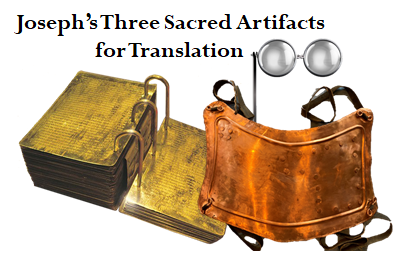 “Not only did Joseph Smith use the Urim and Thummim to translate the Book of Mormon, but he also used it to receive revelation from God. Specifically, Doctrine and Covenants sections 3, 6, 11, and 14, 15,16, were all given through the Urim and Thummim. (See headings to these sections) We learn from the Doctrine and Covenants that “the place where God resides is a great Urim and Thummim.” In addition, “this earth, in its sanctified and immortal state, will be made like unto crystal and will be a Urim and Thummim to the inhabitants who dwell thereon.” And each person who receives the white stone mentioned in Revelation 2:17 will be able to use the Urim and Thummim (D&C 130:8–10).” by Jay A. Parry and Larry E. Morris, adapted from “The Mormon Book of Lists” | Jan. 18, 2019 LDS Living
“Not only did Joseph Smith use the Urim and Thummim to translate the Book of Mormon, but he also used it to receive revelation from God. Specifically, Doctrine and Covenants sections 3, 6, 11, and 14, 15,16, were all given through the Urim and Thummim. (See headings to these sections) We learn from the Doctrine and Covenants that “the place where God resides is a great Urim and Thummim.” In addition, “this earth, in its sanctified and immortal state, will be made like unto crystal and will be a Urim and Thummim to the inhabitants who dwell thereon.” And each person who receives the white stone mentioned in Revelation 2:17 will be able to use the Urim and Thummim (D&C 130:8–10).” by Jay A. Parry and Larry E. Morris, adapted from “The Mormon Book of Lists” | Jan. 18, 2019 LDS Living
Conclusion- Joseph Fielding Smith
“Joseph Smith received the same Urim and Thummim had by the Brother of Jared for it was the one expressly provided for the translation of the Jaredite and Nephite records. (D&C 10: 1; 17:1; Ether 3:22- 28.) It was separate and distinct from the one had by Abraham and the one had by the priests in Israel. The Prophet also had a seer stone which was separate and distinct from the Urim and Thummim, and which (speaking loosely) has been called by some a Urim and Thummim.” Mormon Doctrine page 576 under title Urim and Thummim and (Doctrines of Salvation, vol. 3, pp. 222-226. Italics added) Moroni said, “And now he [Mosiah] translated them by the means of those two stones which were fastened into the two rims of a bow. Now these things were prepared from the beginning, and were handed down from generation to generation, for the purpose of interpreting languages; And they have been kept and preserved by the hand of the Lord, that he should discover to every creature who should possess the land the iniquities and abominations of his people;” Mosiah 28:13-15 “The earliest mention of the Urim and Thummim is in connection with the brother of Jared. The Lord told him to keep a record of certain sacred things and to seal the record up. (We have that record in the book of Ether.) “And behold, these two stones will I give unto thee, and ye shall seal them up also with the things which ye shall write” (Ether 3:23). That same Urim and Thummim was used by Joseph Smith in translating the Book of Mormon.” LDS Living
Urim and Thummim Used by Brigham Young?
The Prophet Joseph Smith was not the only individual in this dispensation to use the Urim and Thummim and to receive revelations from God. Heber C. Kimball testified that Brigham Young also used these sacred instruments. Has Brother Brigham Young got the Urim and Thummim? Yes, he has everything that is necessary for him to receive the will and mind of God to this people. Do I know it? Yes, I know all about it. . . . (Heber C. Kimball, J.D. 2:111)
You can purchase my 103 page full color and newly printed book titled, “These Stones, Fastened by a Breastplate” JSH 1:75
LDS Bible Dictionary Urim and Thummim
Hebrew term that means “Lights and Perfections.” An instrument prepared of God to assist man in obtaining revelation from the Lord and in translating languages. See Ex. 28:30; Lev. 8:8; Num. 27:21; Deut. 33:8; 1 Sam. 28:6; Ezra 2:63; Neh. 7:65; JS—H 1:35.
Using a Urim and Thummim is the special prerogative of a seer, and it would seem reasonable that such instruments were used from the time of Adam. However, the earliest mention is in connection with the brother of Jared (Ether 3:21–28). Abraham used a Urim and Thummim (Abr. 3:1–4), as did Aaron and the priests of Israel, and also the prophets among the Nephites (Omni 1:20–21; Mosiah 8:13–19; 21:26–28; 28:11–20; Ether 4:1–7). There is more than one Urim and Thummim, but we are informed that Joseph Smith had the one used by the brother of Jared (Ether 3:22–28; D&C 10:1; 17:1). (See Seer.) A partial description is given in JS—H 1:35. Joseph Smith used it in translating the Book of Mormon and in obtaining other revelations.
This earth in its celestial condition will be a Urim and Thummim, and many within that kingdom will have an additional Urim and Thummim (D&C 130:6–11).
https://www.churchofjesuschrist.org/study/scriptures/bd/urim-and-thummim?lang=eng

